#ancient egyptian religion and magic
Explore tagged Tumblr posts
Text
Magic and religion as a performative theological unity : the apotropaic 'Ritual of Overthrowing Apophis'
I. Kousoulis, Panagiotis (1999) Magic and religion as a performative theological unity : the apotropaic 'Ritual of Overthrowing Apophis'. PhD thesis, University of Liverpool.
"Abstract
Magical and ritual sources have characteristically tended to be under-exploited in the study of ancient societies, partly for the superficial inaccessibility, and partly because they have been disreputably attractive to the "esoteric" fringe. They do, however, provide a number of detailed insights into the relations between real and practical behaviour and the ideological/religious explanations of that behaviour. The present study attempts to investigate this interrelation between magical and religious phenomena, having as starting point and basic theme of reference the apotropaic "Ritual of Overthrowing Apophis, " the enemy of Re par excellence. It will examine the function and mechanisms of the ritual from its first appearance in the funerary liturgies of the Middle Kingdom until its acquisition of a complete cultic character within the broader religious environment of the Ptolemaic temples of Edfu and Dendera. The presentation of the available material cannot reach completeness. The present study does not claim to be a integral philological investigation of either the complex nature of the serpentine enemy of the sun god or of the ritual texts referring to his conflict with Re and his final expulsion. Rather, carefully selected texts concerning the Apophis ritual are used as a trigger for re-examining certain areas and aspects of cultic phenomena where religion and magic reaches a "theological, " performative unity. Techniques that are common in both systems, such as the magician's acting and speaking as god ("divine speech"), the enumeration of the human bodily parts that are ascribed to particular deities ("lists"), erasure of names and mutilation of images (damnatio memoria), should be analysed and re-evaluated under this new perspective. Questions concerning the notion of hk3 itself, should also be considered: was hk3 considered to pre-exist as the archetype creative force, or was it a human invention to explain the unexplained and to control and repel hostile forces beyond its nature, or was it a personification of the power of ritual? Such a methodological approach to Egyptian magic will lead into a stage where the main point of reference will be the anthropology and sacred praxis of hk3, rather than a random compilation of superstitions and popular beliefs."

Panagiotis Kousoulis is Professor of Egyptology, Department of Mediterranean Studies, at the University of the Aegean and Director and founder of the Laboratory for the Ancient World of the Eastern Mediterranean in the same Department.
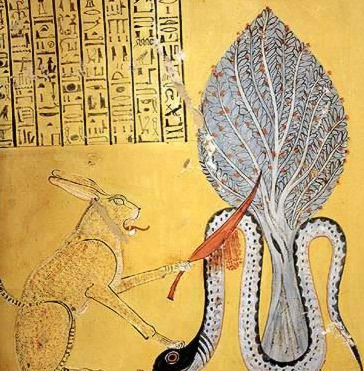
The sun god Ra, in the form of Great Cat, slays the snake Apep (Apophis), the ancient Egyptian deity who embodied darkness and disorder (source: https://en.wikipedia.org/wiki/Apep).
2 notes
·
View notes
Note
Oh? How normal are we about Pharaoh Cub?
Okay look. You gotta understand. I've been interested in ancient Egpyt since I was a kid. It's my longest-running special interest/hyperfixation, so much so that I've been practicing ancient Egyptian religion for over twenty years. It's something that's very, very precious to me, bc it's so personal to me, and bc I'm who I am, my knowledge of this stuff is arguably higher than the average person. This makes any kind of media about ancient Egypt actually not that interesting to me bc my brain will Not shut up about inaccuracies, so I tend to avoid them bc of that.
(I could go on about my issues with ancient Egyptian themed media, but I won't, that's a whole 'nuther essay frfr.)
(Also I hope you like infodumping, anon, bc that's what I'm about to do :D)
That said, I've actually written a whole lot of Egyptian myth rewrites, as well as ancient Egyptian stories exploring all kinds of various topics. I have some published on an old blog of mine, but some I never finished for various reasons. It's a whole thing. It's been a whole thing for me for a very, very long time.
So, you're me, someone with a more than average knowledge of and interest in ancient Egypt, and you've just become a Cub fan in s8 bc that was my first Hermitcraft season. I had heard about the pyramid, and Pharaoh Cub, and I was both SO INTERESTED but also actually quite hesitant to watch Cub's s7, bc I didn't want to be disappointed if he messed it up or did something wrong that caused my brain to Disagree. Again, very irrational bc my brain do be like that, but also based on previous experiences of seeing ppl just taking the aesthetics and doing whatever with it, and screw historical accuracy.
(Honestly, this is, like, my One (1) critism with the lore TrixyBlox built into the USW map. Can we Not have evil pharaohs plz just for once. ;_;)
I wanted to trust Cub, bc I'd seen the research that went into the canyon build. He's a smart dude. He cares about getting those kinda details right. And I did genuinely want to see how he approached the pyramid build and how he was going to use it as a base. But again, SO HESITANT. bc what if my blorbo messes it up and ruins the whole thing for me bc m brain is Stupid about this sort of thing. ;_;
But I'm so glad I trusted Cub when I did get around to watching s7, bc I fell in love with the pyramid. The fact that he cared about making it as life-size as possible, but also that he took an approach of taking what works, but also making it his own, and making it fit into the minecraft world. Like, using Standard Galactic for hieroglyphs! I loved that small little detail! It makes so much sense to use it that way.
Like, my very-not-srs gripes about the Pharaoh skin and its weird sleeves aside, his approach was very much how a lot of Egyptian pagans approach things today. Take what works, or what makes sense, and adapt it to where we currently are in the world and what we have access to. And I could tell from how he talked about it throughout the season that he really had done his research. And just- The Morning and The Evening Sun/Star epithet he gave himself like!!!!
Like, it's the little things, like the lapis roof, the stars - including Sirius!, the most important one bc its rising heralds the flood of the Nile and the new year - on the ceiling in the bedroom, the statue room and the way he built those five statues to represent aspects of himself (I cannot stress enough how much I adored those statues), allll the little tunnels and sekrit passageways, and the cartouche on the wall with his name in SGA and using SGA in the museum room, the treasure room with its traps, and the tomb of the Pharaoh himself. Like. It was such a perfect blend of Cub and Egyptian stuff. 10/10. I can find no faults. Although I do want to go back and finish the oasis room at some point. Make it a healing pool room with a shrine or two in it. Something like that.
Like, I had my doubts, but I trusted Cub and his process, and I was right to do so. It cemented Cub as my favourite Hermit at that point, bc he took my special interest and did it justice. And that's why I'm Very Normal about Pharaoh Cub.
But there are also other aspects too! Pyramids were designed to be tombs, and that's where the Pharaoh was left to rest at the end of s7. Which seems very appropriate, given where Hermitcraft went after that.
The reason I fixate so much on this is that there's this Egyptian underworld book called the Book of Caverns, that describes the King's journey through the underworld. It's not as well-known as the Book of the Dead, but the reason I keep coming back to it is because of Cub's canyon in s8. Where he built everything in little caverns in the canyon itself. And with the change of skin to young Cub, my brain just cannot let go of the idea of s8 being Pharaoh Cub's journey through the underworld, culminating with the final battle against the serpent we do not name so we do not give it power (a/p/o/p/h/i/s) that is here manifested in s8 as Moon Big. It's not a perfect metaphor, and I won't pretend it is. Especially bc while Cub escapes, the world is destroyed, and that's not necessarily accurate. But! He still escapes! He uses all his knowledge and resources that he's gained through his journey through the underworld to escape. To rise again in s9 as the new sun.
AND AND AND the fact that in s9 PHARAOH CUB DID ACTUALLY RETURN. Only now, we have the Pharaoh as a distinct entity. A divine akh/ancestor, a master magician, one who is clever and wiley like Thoth and who loves playing games and playing pranks. (Thoth is a trickster, and a very smart one.) And to have the distinction between Pharaoh Cub, who is a god, and mortal Cub, who is just Cub, like.
(Cub and his possession kink is also a whole 'nuther essay frfr)
That distinction makes sense in an Egyptian theological framework. Once the Pharaoh dies, they become divine akhu/ancestors. Very few were Actually Deified in a way we would recognise, but Cub is still not wrong when he calls the Pharaoh a god. The Pharaoh was a conduit between the people and the gods. He acted as the only high priest of the religion. He became King by hosting the Kingly Ka, the divine soul of Horus that legitimises their rule. This Ka/soul, has been with every king before it, and all the kings are attached/accessed through it. Kings live forever, after all. My own personal religious work has involved various Kings and Queens and working with them. (Not the most famous ones, tho, it's mostly the Sobek ones bc I worship Sobek first and foremost.)(Sobek being a crocodile god, a strong protector, and a god who was incorporated in Horus at one stage and gained Kingship attributes from that.)
And so it makes so much sense for the Pharaoh to be a separate entity now. The old man died, bc Cub is mortal, and ba/eternal soul of Cub was reborn into a new, younger body, with a whole new ka. Everyone has a ka, it is the soul that belongs to a particular lifetime and is the one that goes through judgement after death. The ba is eternal, and can have many kau/souls throughout its existence.
And bc the Pharaoh has died and become an akh, he can be contacted and manifest in the world again through the mortal Cub. The fact that Cub never actually changed the Pharaoh skin to reflect his younger self? It still has the old man's face? Like. This helps the distinction work. They're two different souls. This is theologically sound. And honestly I never imagined the Pharaoh lore would get to that point. But here we are, in s9, and we have the Pharaoh and mortal Cub, and I am Just So Normal about this bc I thought I'd missed my chance at Pharaoh Cub bc I only started watching in s8. BUT NO. s9 came along and is like, would you like some more Pharaoh Cub? and it's eating my brain like. oh my gods.
And also like, the Vex Magic Grimoire I've been working on? Canonically (to me), it's being written by Pharaoh Cub. Once the ConVex and ConCorp shenanigans settled down, and Cub had space to really focus on his magic, that's when he starts working on the grimoire. bc almost all Pharaohs were also master magicians. They had to be! It was part of their work as high priest and conduit for the gods. So Cub has Pharaoh magic on top of Vex magic, and in working through his new powers, decides to start recording down all he knows about Vex magic. Scar does some as well, but it is intended to be mostly Cub.
(I have an ask I STILL have not got around to about the Pharaoh's magic, and I will save a longer discussion for that there. I will get to it, I promise, anon! It's just taken a while to get my thoughts in order. <3)
It's like, in Pharaoh Cub, I can combine my love of writing about Egyptian things with my current hyperfixation on Cub, and it's so much fun omg. Cub doesn't do deep lore the way someone like Sausage does (again, whole 'nuther essay lol), but there's enough there to make a really good story, and build up these aspects of his character and make a really coherent story out of it.
And with Pharaoh Cub, I can explore all kinds of things that maybe don't work with other characters. Like death! In a way that doesn't really happen in minecraft bc players just respawn. Permanent death is something I've really only encountered on Empires, not Hermitcraft. But with the Pharaoh dying and being laid to rest in his pyramid? Like. That's something to work with. There's lore there to explore. Old Man Cub coming to terms with dying and what happens afterwards. and bc like. idk if anyone has actually ever written Old Man Cub as an actual Old Man. But as someone who's approaching 40, and has their own chronic pain stuff to deal with, like? Maybe I see it differently. Maybe I want to approach Old Man Cub as an old man. And maybe the Old Man dying as Pharaoh, and being reborn into a younger body is one way to do that.
Sure, it may not be the most popular fics for ppl. Maybe ppl are more interested in my other works. But I don't care. It's all my special interests in one place and I'm having the time of my life. :D
Even if I STILL don't know what to do with the journey through the afterlife!s8 caverns idea. Maybe one day I will find the right spark to do that idea justice. <3
#convexical asks#hermitcraft#convex#cubfan135#gtwscar#pharaoh cub#old man cub#young cub#fanfic#cub's pyramid best pyramid#ancient egyptian magic#ancient egyptian religion#devotional writing#mythfiction#this is a lot of infodumping#but i hope it helps explain things
61 notes
·
View notes
Text
The Philosophy of Kemetic Orthodoxy
Kemetic Orthodoxy is a modern religious movement that revives the ancient Egyptian religious practices, also known as Kemetism. Rooted in the religious traditions of ancient Egypt, Kemetic Orthodoxy emphasizes the worship of the Egyptian gods, a deep connection with ancestors, and the pursuit of Ma’at, the concept of balance, truth, and cosmic order.
Key Principles of Kemetic Orthodoxy
Ma’at (Cosmic Order, Truth, and Balance):
The central philosophical concept in Kemetic Orthodoxy is Ma’at, which represents the natural order of the universe, encompassing justice, harmony, balance, truth, and morality.
Followers strive to live in accordance with Ma’at by fostering balance in their relationships, communities, and with nature. It also involves resisting Isfet, or chaos, which is the opposite of Ma’at.
Polytheism and the Egyptian Gods:
Kemetic Orthodoxy recognizes the pantheon of ancient Egyptian deities, such as Ra, Isis, Osiris, Hathor, Anubis, and others. These gods represent various aspects of the cosmos and human life, and each deity has a specific role and domain.
Worship involves rituals, offerings, prayers, and meditation to honor the gods and cultivate a relationship with them. Temples and priests historically played a major role, but in modern practice, rituals may be conducted individually or in community.
Divine Kingship:
Ancient Egypt viewed the Pharaoh as both a political and spiritual leader, a living incarnation of the god Horus on Earth, and an intermediary between the gods and humanity. While there is no modern equivalent to the Pharaoh in Kemetic Orthodoxy, the idea of divine leadership and service to the community is still respected.
Modern adherents honor leaders who preserve the teachings of the gods and maintain the connection between the divine and earthly realms.
Ancestor Veneration:
A strong emphasis is placed on ancestor worship, where practitioners pay homage to deceased relatives and historical figures. Ancestors are believed to offer guidance, protection, and support in the spiritual journey.
Ancestor veneration ties into the broader concept of heka (magic), which involves the use of spiritual power and knowledge to invoke the presence of the gods or ancestors for assistance.
Heka (Magic or Divine Speech):
Heka is the ancient Egyptian concept of magic or divine speech, through which the spoken word is believed to have the power to influence the world and align the practitioner with Ma’at.
This practice includes the recitation of hymns, prayers, and sacred texts, which are considered powerful tools to maintain order and harmony in the world.
Netjer (Divine Force):
The word Netjer represents the concept of divinity in Kemetic Orthodoxy. It can refer to both the universal divine force and individual deities within the pantheon.
Netjer is seen as manifesting in various gods and goddesses, who represent different aspects of creation, life, and death, and are integral to maintaining the balance of Ma’at.
Personal Piety and Community Worship:
Kemetic Orthodoxy emphasizes personal piety as well as participation in communal religious activities. Personal piety includes maintaining shrines, offering daily prayers, and engaging in meditation to connect with the gods and ancestors.
The community aspect is reflected in festivals and rituals that celebrate significant dates in the Egyptian calendar, such as the Opet Festival, honoring deities like Amun, and the Wep Ronpet (Egyptian New Year), marking the rebirth of the world.
The Concept of the Ka and Ba (Soul Components):
The ancient Egyptians believed in a multi-faceted soul, including the Ka (spiritual essence or vital energy) and Ba (personality or spirit). The Ka represents a person's life force, while the Ba is the unique spiritual essence that survives after death.
Practitioners of Kemetic Orthodoxy work to maintain the health and balance of these aspects of the soul in life and the afterlife.
Ethical and Spiritual Development:
Living according to the values of Ma’at means cultivating virtues such as justice, truthfulness, respect, humility, and generosity. Spiritual development is seen as a journey toward greater harmony with the cosmic order and deeper connection with the gods and ancestors.
Daily life is imbued with spiritual meaning, and each action is a reflection of one's commitment to maintaining Ma’at in the world.
Kemetic Orthodoxy offers a contemporary practice rooted in the ancient Egyptian worldview, where the divine, the natural world, and human life are interconnected through the principle of Ma’at. By honoring the gods, ancestors, and cosmic order, followers of Kemetic Orthodoxy strive to live balanced, just, and spiritually meaningful lives, with a strong sense of responsibility to maintain harmony and resist chaos.
#philosophy#epistemology#knowledge#learning#education#chatgpt#ontology#metaphysics#Kemetic Orthodoxy#Ma’at#Ancient Egyptian Religion#Polytheism#Ancestor Veneration#Heka (Magic)#Netjer#Spiritual Balance#Egyptian Gods#Pharaoh
1 note
·
View note
Text
"Unveiling the Mysteries: E. A. Wallis Budge's 'Egyptian Magic'—A Scholarly Odyssey into Ancient Mysticism"

"Egyptian Magic" by E. A. Wallis Budge serves as a captivating portal to the mystical world of ancient Egypt, where the realms of magic, religion, and spirituality seamlessly intertwined. Published in [year], this seminal work by Budge, a renowned Egyptologist, offers readers a comprehensive exploration of the magical practices and beliefs that permeated the daily lives of the ancient Egyptians. The title itself hints at the enigmatic allure that beckons readers into a realm where the boundaries between the mundane and the supernatural blur.
Budge, known for his extensive scholarship on Egyptology, brings to life the magical traditions of ancient Egypt with meticulous detail. The title "Egyptian Magic" acts as a prelude to a journey through the spells, rituals, and incantations that were integral to the spiritual landscape of this ancient civilization. Budge's prose, though rooted in academic rigor, retains a sense of wonder that makes the subject accessible to both scholars and enthusiasts alike.
One of the strengths of "Egyptian Magic" lies in Budge's ability to contextualize magical practices within the broader religious and cultural framework of ancient Egypt. Each chapter unfolds like a chapter in the Book of the Dead, revealing the layers of meaning behind the magical spells and their significance in the Egyptian worldview. The title becomes a guide through this esoteric terrain, inviting readers to decipher the symbols and incantations that held profound meaning for the practitioners of ancient Egyptian magic.
Budge delves into the different categories of magical practices, from healing spells to protective amulets, showcasing the diverse ways in which magic permeated every facet of Egyptian life. The title "Egyptian Magic" encapsulates this multifaceted exploration, promising readers a glimpse into the rituals that sought to harness cosmic forces and commune with the divine. Budge's meticulous research and translations transport readers back in time, allowing them to witness the rituals and ceremonies that were once an integral part of the Egyptian magical tradition.
The inclusion of hieroglyphic illustrations and translations of magical texts further enhances the immersive experience of "Egyptian Magic." Budge's expertise in deciphering ancient Egyptian scripts provides readers with a firsthand encounter with the original magical incantations. The title serves as a doorway to an ancient scriptorium, where the secrets of Egyptian magic are inscribed in symbols that continue to captivate and mystify.
Beyond the academic discourse, Budge's work touches upon the spiritual dimensions of ancient Egyptian magic. The title becomes a metaphorical key, unlocking the mystical teachings that guided the Egyptian magicians in their quest for spiritual enlightenment. Budge sheds light on the deep connection between magic and the afterlife, where spells and charms were believed to secure a favorable passage through the realm of the dead.
In conclusion, "Egyptian Magic" by E. A. Wallis Budge stands as a magnum opus that unravels the complexities of an ancient civilization's magical traditions. The title invites readers into a world where the mystical and the mundane coalesce, where words held the power to shape destinies and unlock the gates to the divine. Budge's meticulous scholarship, coupled with the evocative title, ensures that "Egyptian Magic" remains a timeless exploration of the enchantments that once echoed through the sacred temples and burial chambers of ancient Egypt.
"Egyptian Magic" by E. A. Wallis Budge is available in Amazon in paperback 11.99$ and hardcover 19.99$ editions.
Number of pages: 196
Language: English
Rating: 10/10
Link of the book!
Review By: King's Cat
#E. A. Wallis Budge#Egyptian Magic#Ancient Egypt#Mysticism#Magical practices#Religion#Spirituality#Enigmatic allure#Ancient civilization#Spells and rituals#Book of the Dead#Esoteric terrain#Symbols and incantations#Cosmic forces#Communing with the divine#Healing spells#Protective amulets#Egyptian worldview#Hieroglyphic illustrations#Translations of magical texts#Deciphering scripts#Original magical incantations#Scriptorium#Spiritual dimensions#Quest for enlightenment#Afterlife#Passage through the realm of the dead#Academic rigor#Hieroglyphic symbols#Ancient scripts
6 notes
·
View notes
Text
"Unveiling the Mysteries: E. A. Wallis Budge's 'Egyptian Magic'—A Scholarly Odyssey into Ancient Mysticism"

"Egyptian Magic" by E. A. Wallis Budge serves as a captivating portal to the mystical world of ancient Egypt, where the realms of magic, religion, and spirituality seamlessly intertwined. Published in [year], this seminal work by Budge, a renowned Egyptologist, offers readers a comprehensive exploration of the magical practices and beliefs that permeated the daily lives of the ancient Egyptians. The title itself hints at the enigmatic allure that beckons readers into a realm where the boundaries between the mundane and the supernatural blur.
Budge, known for his extensive scholarship on Egyptology, brings to life the magical traditions of ancient Egypt with meticulous detail. The title "Egyptian Magic" acts as a prelude to a journey through the spells, rituals, and incantations that were integral to the spiritual landscape of this ancient civilization. Budge's prose, though rooted in academic rigor, retains a sense of wonder that makes the subject accessible to both scholars and enthusiasts alike.
One of the strengths of "Egyptian Magic" lies in Budge's ability to contextualize magical practices within the broader religious and cultural framework of ancient Egypt. Each chapter unfolds like a chapter in the Book of the Dead, revealing the layers of meaning behind the magical spells and their significance in the Egyptian worldview. The title becomes a guide through this esoteric terrain, inviting readers to decipher the symbols and incantations that held profound meaning for the practitioners of ancient Egyptian magic.
Budge delves into the different categories of magical practices, from healing spells to protective amulets, showcasing the diverse ways in which magic permeated every facet of Egyptian life. The title "Egyptian Magic" encapsulates this multifaceted exploration, promising readers a glimpse into the rituals that sought to harness cosmic forces and commune with the divine. Budge's meticulous research and translations transport readers back in time, allowing them to witness the rituals and ceremonies that were once an integral part of the Egyptian magical tradition.
The inclusion of hieroglyphic illustrations and translations of magical texts further enhances the immersive experience of "Egyptian Magic." Budge's expertise in deciphering ancient Egyptian scripts provides readers with a firsthand encounter with the original magical incantations. The title serves as a doorway to an ancient scriptorium, where the secrets of Egyptian magic are inscribed in symbols that continue to captivate and mystify.
Beyond the academic discourse, Budge's work touches upon the spiritual dimensions of ancient Egyptian magic. The title becomes a metaphorical key, unlocking the mystical teachings that guided the Egyptian magicians in their quest for spiritual enlightenment. Budge sheds light on the deep connection between magic and the afterlife, where spells and charms were believed to secure a favorable passage through the realm of the dead.
In conclusion, "Egyptian Magic" by E. A. Wallis Budge stands as a magnum opus that unravels the complexities of an ancient civilization's magical traditions. The title invites readers into a world where the mystical and the mundane coalesce, where words held the power to shape destinies and unlock the gates to the divine. Budge's meticulous scholarship, coupled with the evocative title, ensures that "Egyptian Magic" remains a timeless exploration of the enchantments that once echoed through the sacred temples and burial chambers of ancient Egypt.
"Egyptian Magic" by E. A. Wallis Budge is available in Amazon in paperback 11.99$ and hardcover 19.99$ editions.
Number of pages: 196
Language: English
Rating: 10/10
Link of the book!
Review By: King's Cat
#E. A. Wallis Budge#Egyptian Magic#Ancient Egypt#Mysticism#Magical practices#Religion#Spirituality#Enigmatic allure#Ancient civilization#Spells and rituals#Book of the Dead#Esoteric terrain#Symbols and incantations#Cosmic forces#Communing with the divine#Healing spells#Protective amulets#Egyptian worldview#Hieroglyphic illustrations#Translations of magical texts#Deciphering scripts#Original magical incantations#Scriptorium#Spiritual dimensions#Quest for enlightenment#Afterlife#Passage through the realm of the dead#Academic rigor#Hieroglyphic symbols#Ancient scripts
0 notes
Text
"Priestess of Isis", "Enchantress" and "Sylph": Occult References in Ellen Hutter’s character in “Nosferatu” (2024)
In another post I analyzed Ellen Hutter’s character in the 2024 adaptation of “Nosferatu” through literary lenses of the Gothic female genre. Now, I want to dwell on her occult and mystical symbolism, and how this translates in her connection with Count Orlok, the undead demon of the story, who’s bound to her. But how and why? And what exactly is she in this story?
“In heathen times you might have been a great priestess of Isis.”
Von Franz tells this to Ellen in their last scene together, because he recognizes her spiritual power and ability to communicate with the spiritual world. Her “hysterical fits” and “epilepsies” also mirror the trance-like states of Pagan priestesses. She inhabits the “borderland”, a peripheral area, a portal between the two worlds: the physical (matter) and the spiritual.

“The pupil is expanded. It does not contract naturally to the light. […] A second sight. She’s no longer here. […] She communes now with another realm.”

“Somnambulists afflicted with these perversions [hysterics and lunatics] oft possess a gift: a sight into the borderland. […] I believe she has always been highly conductive to cosmic forces, uniquely so.”
Von Franz says demons usually obsess over “those whose lower animal functions dominate”, because they like them and seek them out. He elaborates: hysterics and lunatics. However, he says this before he actually gets to know Ellen, and he quickly realizes that’s not the case here. Because Ellen is the one who awoke Orlok from his centuries old sleep. Which is confirmed by three characters in the narrative: Orlok, Ellen herself and Von Franz.
O’er centuries, a loathsome beast I lay within the darkest pit… ‘til you did wake me, enchantress, and stirred me from my grave. You are my affliction.

Which leads me to the next topic:
Why Isis, of all deities?
Isis and Osiris
Isis is one of the major Egyptian deities. She’s more commonly known for her role as “Mother Goddess” of Horus, the Sun god. Isis had mighty magical powers, greater than that of all other gods, she governed the natural world, healing and wield power over Fate itself.
“Destiny!” Ellen cries out to Anna, while looking at the sea. “Providence!” Herr Knock screams throughout the narrative. “You run in vain! You cannot out-run your destiny!” Von Franz laughs in religious fervor as Thomas tries to save Ellen.
Isis is also connected with the themes of death, sex and rebirth in Egyptian cosmology, due to the myth of Isis and Osiris; which are also the core themes of Robert Eggers’ adaptation of “Dracula/Nosferatu”, so it’s not coincidental.
The “Osiris Myth” is one of the major surviving pieces of Egyptian mythology. It’s a ancient tale, with its early versions dating back to the 5th Dynasty (c. 24th century B.C.). It has known several adaptations throughout Egyptian history. The most complete version is in “The Moralia” by the 1st-century scholar Plutarch of Chaeronea, a collection of essays about Greco-Roman culture; that became very popular during the Renaissance era (14-16th centuries) and the Enlightenment period (18th century) in Europe.
Isis and Osiris were brothers, and according to Ancient Egyptian religion, they were in love with one another before they were born, and enjoyed each other in the dark before they came into the world. They eventually married.
Osiris had two facets as a God: in life, he was the God of fertility, agriculture, and vegetation, being considered a “Shepherd God”; in death, he was the God of the Underworld, the judge and Lord of Dead, the afterlife and resurrection. The pharaohs of Ancient Egypt were associated with Osiris in death, because as he rose from the dead, so would they unite with him and gain eternal life through imitative magic. Which appears to be the whole deal between Orlok and Herr Knock in “Nosferatu”, as Knock seeks to gain immortality like Orlok, by serving him.
On Earth, Osiris was believed to take on the form of a bull (the sacred bull Apis). What I find interesting here is that in both the 2016 script and the 2023 script of “Nosferatu”, Orlok’s physicality is actually compared to a bull:


Osiris became king of Egypt, and taught the people how to farm and live peacefully in their villages; he had a reputation for being a powerful and wise king, loved and respected by the Egyptian people. We don’t know exactly how Eggers’ Orlok was in life, other than him being a Romanian or Hungarian nobleman and a Solomonar sorcerer who sought to achieve immortality. But if we go by Vlad III (Drakule or Dracula, the infamous “Vlad the Impaler”) biography, he’s actually considered a Romanian national hero because he defended the Romanian people from foreigner invaders (Germanics and Turks, mostly). Just throwing this out there, because it’s unsure if this is intentional or not.
Osiris and Isis had a brother, Seth (or Typhon in Plutarch essays), the God of deserts, storms, disorder and violence, who murdered Osiris to take his throne. He tricked Osiris into climbing into a wooden chest/coffin, shut the lid, sealed it shut, and threw it down the Nile River, knowing Osiris would never be able to survive. In some versions, it’s said Seth cut Osiris body into pieces and scattered them throughout Egypt. Interestingly enough, there’s a similar legend associated with Vlad the Impaler, who died in battle against the Ottomans, and, according to Leonardo Botta, the Milanese ambassador in Buda(pest), Vlad’s enemies cut his corpse into pieces, too. and his remains were never found.
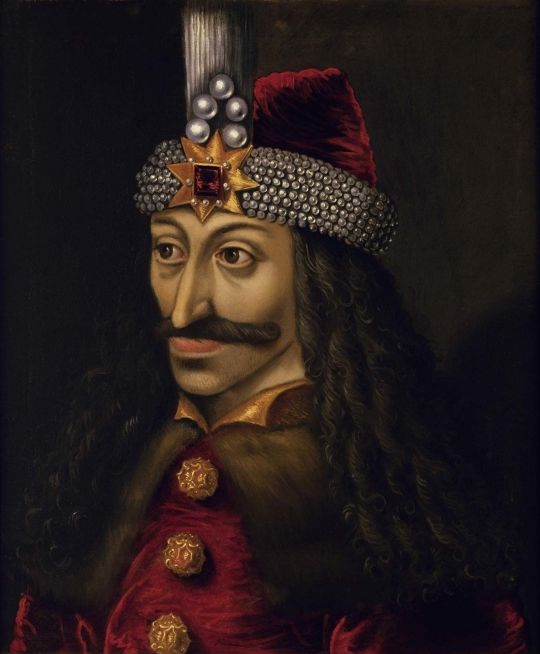
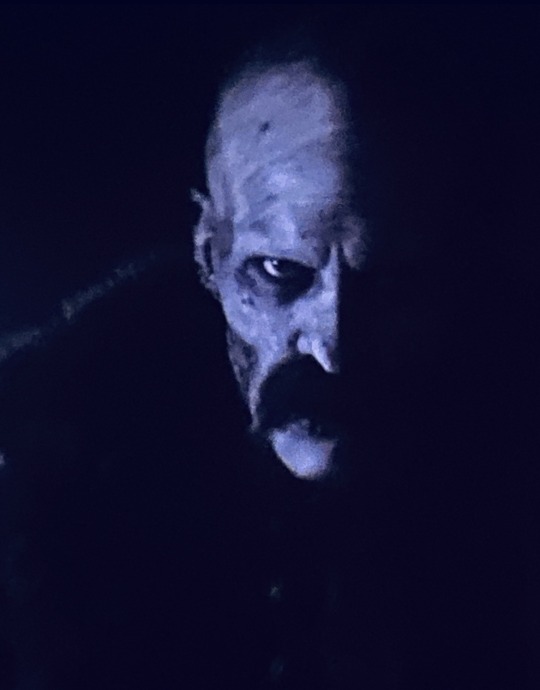
Isis is the epitome of the mourning widow in this myth, as she mourns Osiris’ death deeply. Here enters the symbolism of the lilacs in "Nosferatu", the symbolic flowers of Ellen and Orlok: in the Victorian era, they were associated with widows because they represented a memento of a deceased lover.
Can this also be a nod to “Bram Stoker’s Dracula” (1992) by Francis Ford Coppola? Where Dracula himself is the grieving widower because Elisabeta commits suicide? In the 1992 adaptation, Mina also speaks of “flowers of such frailty and beauty as to be found nowhere else”. What flowers is Mina talking about? It’s unclear, but Lilacs are native flowers to the Balkans, after all.
Isis sought for Osiris’ mangled body and with help of tree other Gods (Nepthys, Thoth and Anubis), they sew Osiris’ body back together, and then wrapped it head to toe in strips of linen, creating a mummy. Interestingly enough, Orlok’s corpse appears almost mummified at the end of the story.

In the Osiris myth, Isis uses powerful magic (incantations and magic spells) to bring her dead lover back to life; similar to Ellen who resurrects Orlok with her summoning prayer. In one version, this happened on a night of the full moon; in “Nosferatu” (2024) we also have a full moon connected to Ellen and Orlok, in the prologue, when he reveals his rotten corpse to her:
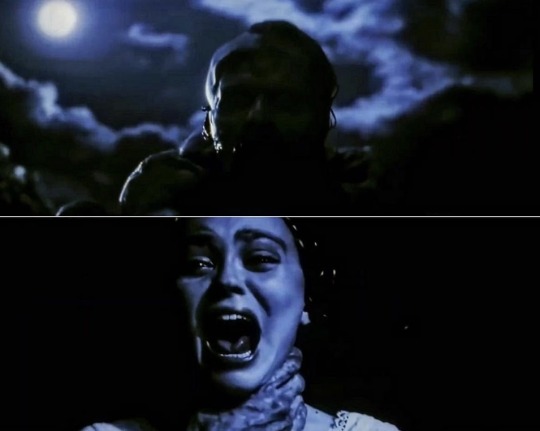
According to Ancient Egyptian funerary texts, it’s Isis sorrow, sexual desire and anger that empower her magic to be able to bring Osiris back to life. When Ellen prays for a companion of “any celestial sphere” in the prologue, she’s crying (sorrow), she’s upset because her father recoils from her now that’s she’s no longer a child (anger) and she’s in her teenage years/puberty (sexual desire). Like Isis with Osiris, it’s the combination of these emotions that power her magic to unconsciously resurrect Orlok.
However, Osiris can’t remain among the living, because he has to return to the Underworld and become King of the Afterlife. But before he goes, Osiris and Isis conceive Horus, the God of the sun and the sky, who will restore peace and order to the universe. In “Nosferatu” (2024), Von Franz says that “with Jove’s holy light” before dawn, redemption will come to the people of Wisburg and the curse of Nosferatu will be vanquished. “Jove” is Jupiter, the “King of the skies”, who’s connected with the Egyptian Horus. Horus and Ra are often merged together in Ancient Egyptian religion, making Isis and Osiris the metaphorical parents of the Sun.

In “Nosferatu” (2024), as Orlok and Ellen complete their covenant, consummate their wedding and he drinks from her, the sun is also the metaphorical result of their union. As dawn breaks, the sunlight vanquishes them both from the physical world, as they both die in the material realm.

After being buried by Isis, Osiris goes into the Underworld to rule over it. And from then on, Isis herself is also associated with funeral rites, as she would guide the souls of the dead, helping them entering the afterlife. Through her magic, Isis helped resurrecting the souls of the dead, as she did with Osiris, acting as a mother to the deceased, providing protection and nourishment.

At the end of "Nosferatu" (2024) we see Ellen fulfilling her role as “priestess of Isis” (or as Isis herself?), as the Goddess of healing, who ends the blood plague in Wisburg, but also guides her dead lover Orlok/Osiris with her into the Underworld... where he'll rule as king? Unclear.
Since we are discussing the Egyptian Gods, I have to mention Greta the Cat, Ellen’s domestic cat. Her name is an obvious homage to Greta Schröder, the actress who played Ellen Hutter in the original 1922 “Nosferatu”. Indeed, cats are predators to rats, however, the Egyptian Goddess Bastet is considered to be Isis’ daughter. She's the "cat goddess" for cats were considered sacred in Ancient Egypt. Bastet was associated with sun gods like Horus and Ra. Bastet was the goddess of pregnancy, childbirh, and protection against contagious diseases and evil spirits.
Enchantress
Orlok calls Ellen “enchantress”, but what does this mean? “Enchantress” is not only a female archetype, but has root in historical realities. Enchantresses were practitioners of feminine magic: oracles, healers, herbalists, midwives and shamanic shapeshifters. They were what’s commonly known as “witches”. These female magicians studied and practiced their art in goddess temples, mystery schools, alchemy schools and hedge schools.
The alchemists of the Middle-ages studied these dynastic lineages of “wise women”, and they had several names: enchantresses, chantresses, encantrices, or incantrix. Many physicians who founded "medicine" and "science" studied these wise women, mainly healers and their use of medicinal plants and herbs.
Ellen’s character appears to fit that of a “incantrix”. Women who used words, incantations, songs, spells and prayers to shape reality. It’s the priestess of an old religion (as Von Franz also calls her); gifted with magic power and authority to command the elements or the body by the power of their word.

Heptagrams
Orlok seal (or sigil) meaning has already been widely discussed by others (symbols of Ancient Dacian religion, mainly the figure of Zalmoxis), but what I want to mention here is the heptagram itself, the seven-pointed star. Heptagrams have several occult meanings, including warding off evil which, for obvious reasons, doesn’t fit Orlok’s character. It has meaning in Alchemy, too, as representative of the seven planets and seven substances.

The heptagram, however, is used by Aleister Crowley in his occult system Thelema (from Ancient Egyptian text) to represent a goddess/archetype: Babalon, which is also connected with Isis, Nuit, Lilith, Kali, among other goddesses and deities. At its core, it’s a goddess of female empowerment and liberation, of divine feminine. According to this occult belief, Babalon has several manifestations (sort of incarnation) and is a spiritual gateway to wisdom and enlightenment through chaos and female sexuality.

In “Nosferatu” (2024), when Ellen and Thomas are returning home, there’s a man in the streets rambling bits from the “Book of Revelations” (Apocalipse) from the Bible: “And I saw a beast rising out of the sea, owith ten horns and seven heads, with ten diadems on its horns and blasphemous names on its heads.” (Revelations, 13:1).
Indeed this passage is about Orlok arrival and how he’ll spread plague among the town. However, we have a character in the “Book of Revelations” which is connected to all of this: the Whore of Babylon, the “Mother of Prostitutes and All Abominations of the Earth”, and she rides this Beast, which is the same as Crowley’s Babalon. What Crowley did was a positive reinterpretation of this biblical figure, symbolizing liberated female sexuality by embracing the powers of the Divine Harlot.


Also known as the “Scarlet Woman” and “Great Mother”, this complex and mysterious figure was established in 1904 in “The Book of Law”, however her roots are far older, and can be found in the Enochian tradition, a magical system by John Dee and Edward Kelly, dated from the late 16th century. In the 2016 script of “Nosferatu”, Orlok spoke Enochian, so it’s clear Robert Eggers is very much aware of all of this.
Initiatrix, Creator and Destroyer, Babalon is the “Great Mother” because she represents matter, Mother Earth. Like Isis, she’s the Archetypical Mother, the Womb, the Great Sea and the Divine Blood itself. According to Crowley, the “whore/harlot” facet is about enjoying sex without the burden of reproduction; and the “mother of abominations” connects with destruction like natural catastrophes, plagues, etc. She’s the ruler of the cosmological sphere and both good and evil (as evil as elemental forces can be or are considered as).
Crowley is a man who was born and raised in the Victorian era where sexuality was to be silenced and repressed, which provides context to his occultist beliefs and his “sex magick” theories. Victorian physicians and scientists were obsessed with classification of sexual perversions, too. “Hysteria” being one example among many. Which is the historical context for Eggers adaptation of “Nosferatu”/“Dracula”, so these references are quite fitting.
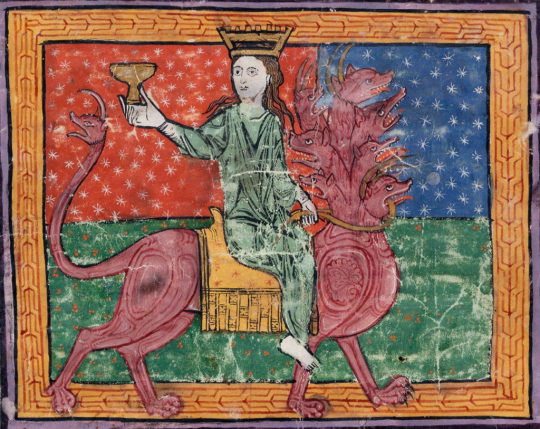
According to the Thelema, Babalon is the “Sacred Whore”, and her primary symbol is the Chalice or Graal (symbolic womb). She’s a consort to the Beast, who has seven heads, which is symbolically represented in her heptagram sigil. Crowley described her: “She rides astride the Beast; in her left hand she holds the reins, representing the passion which unites them. In her right she holds aloft the cup, the Holy Grail aflame with love and death. In this cup are mingled the elements of the sacrament of the Aeon”.
To Crowley these were not actual beings but titles/archetypes (sort of speak) in his Sex Magick beliefs: the “Scarlet Woman” is the High Priestess, and the “Beast” is the Hierophant. This fits Ellen (the priestess) and Orlok (warlock, black sorcerer) in “Nosferatu” (2024). The “Scarlet Woman” is a gateway to both the moon and the sun, and we see both associated with Ellen.
Orlok is described as a “beast” several times in the film, including by himself and by Von Franz, who also mentions Ellen’s “dark bond with beast”, and how she gave her love to the beast: "and lo the maiden fair did offer up her love unto the beast, in close embrace until the first cock crow, her willing sacrifice thus broke the curse and freed them from the plague of Nosferatu."
Orlok says Ellen’s passion is bound to him, like Babalon’s passion is united with the Beast. Babalon as “mother of abominations” also fits with how Ellen unleashed Orlok and his blood plague onto the world, bringing destruction and apocalypse.

Your passion is bound to me. […] I cannot be sated without you. […] Remember how once we were? A moment. Remember?
Thelemic followers of the Beast have been trying to call into being an older, more primeval, female force that is lacking in the Modern Age. Interestingly enough, this was the reason why Orlok became interested in Ellen in the 2016 script (which was later changed, because in the 2023 version it’s Ellen who summons Orlok): “I have sought a creature from the depths. A Eve that remembers her Eden. You are such one.” Both Crowley but more notoriously Jack Parsons have tried a bunch of incantations to conjure Babalon into being.
Oddly enough, the conjuring ritual we see Herr Knock performing at the beginning of “Nosferatu” (2024) is very similar to one of the incantations of Babalon performed by Jack Parsons: Air dagger, blood and channeling of windstorms and the Air element, over a heptagram. He also compares Ellen to a sylph; a nymph of the air element from alchemy and hermetic literature. We are told by Von Franz this is Solomonari sorcery, but is it really?

In Ophidian Thelema, Babalon is the Goddess of magick (“Heka”), of the Liberation of the Spirit (ecstasy), of the Liminal Point, of the Underworld, of Vengeance and of the Principles of Life. Their priestesses use the female body (vulva and womb) to channel their power during their magic rituals. This is similar to Ellen’s “hysterical fits” when she’s communicating with Orlok in the spiritual world, especially since “hysteria” was considered a disease caused by “wandering womb”. In the film, we also see Ellen's womb being talked about between Von Franz and Dr. Sievers during her examination, when they say her menstruation is liberal and she has too much blood in her.

The “liberation of spirit” is in the form of a Serpent, which manifests in the flesh. This notion was present in the “Book of Law”, where its said there’s the dove, and there’s the serpent, and a choice must be made. While the dove represents religion, the serpent represents the spirit. In one scene, Ellen says Orlok is like a serpent in her body; and he replies it’s not him, but her own nature, a nature she denies. Babalon says “my vocation is the serpent.”
The priestesses of Babalon are also in control of their “trances” when they access the spiritual world. In “Nosferatu” (2024) there’s a interesting scene between Ellen and Thomas (the infamous sex scene), when Ellen “comes back” from her transe when he says he’ll call for Dr. Sievers. Does this indicate Ellen is actually in control of her trance-like states?
Babalon is the guardian of the Seven Principles of the Underworld, a place of darkness and transformation. Orlok tells Ellen in the prologue “you are not for the living. You are not for human kind.” Babalon is also the goddess of the liminal point, who can access other realms. As Goddess of vengeance, Babalon punishes when life is out of balance, and exerts violence and corruption upon those who are in the wrong. Ellen unleashes Orlok onto the world, and we can interpret him bringing plague into Wisburg as Ellen’s reckoning against a society that ostracizes her and will never accept her.

All rites and initiations of the Underworld Goddesses include rites of sex and death. Which is what we see with Ellen at the end of “Nosferatu” (2024). By Thelemic occult tradition, she, the manifestation of Babalon, has sex with the Beast (Orlok), “representing the passion which unites them” and her womb (Holy Grail; cup) is “aflame with love and death” (sexual climax, orgasm, with an un-dead vampire).
I will work the work of wickedness; I will kill my heart; I will be loud and adulterous; I will be covered with jewels and rich garments; I will be shameless before all men; I will, for token thereof, will freely prostitute my body to the lusts of each and every living creature that shall desire it; I claim the Mystery of Mysteries, BABALON the Great, and the Number 156, and the robe of the Woman of Whoredomes and the Cup of Abomination. “The Great Beast: The Life of Aleister Crowley”, John Symonds, 2016

Orlok being the Beast and Ellen the manifestation of Babalon explains why she’s promise to him in the narrative, and was never meant to marry Thomas: in Thelemic tradition, the Beast is the consort of Babalon, after all. Orlok's interest in Ellen isn't predatory for its own sake; he sees her as his rightful and fated spiritual consort, which fits the "bride of Dracula" theme of the Bram Stoker original story.
This probably also mirrors the 1992 adaptation by Francis Ford Coppola, where Van Helsing calls Lucy the “Devil’s concubine”: "Hear me out, young man. Lucy is not a random victim attacked by mere accident. Do you understand? No. She is a willing recruit, a breathless follower, a wanton follower. I dare say, a devoted disciple. She is the devil's concubine! Do you understand me? Yet, we may still save her precious soul." In this adaptation, Lucy is full Crowley and Parsons “Scarlett Woman”, with red garments and red hair.


Orlok also gives Ellen three nights to accept him/her nature and complete their covenant. Some are mistakenly associating this with Jesus Christ. These “three days” are possibly connected with another Goddess associated with Babalon: Inanna (or Ishtar), the ancient Mesopotamian Goddess of love, war, fertility, sensuality and divine law. The most famous myth about this deity is her descent into the Underworld, where she spends three days and three nights dead, until she re-ascends (rebirth).
Ellen also goes through the “Myth of Inanna” in “Nosferatu” (2024), which is the theme of the heroine descending into the “Underworld”, to suffer, to be stripped bare, to die, and to be reborn in the aftermath. This is the primal Shamanic crisis. Ellen also goes through three days and nights of suffering and death (witnessing her friends and the townsfolk of Wisburg dying by the blood plague) until she joins Orlok and is reborn.
Ellen and Orlok are involved in sex magick, at the end, clearly. But with what purpose? Sex magick to Crowley has several purposes and strong creative power, conjuring, invocation, etc. He believed deliberate acts of sexual transgression were a radical form of super-human power that promised to explode the narrow boundaries of Western Christian society and open the way for a whole new era of human history. Which is probably what’s happening here? A symbolic ending to the sexually repressed Victorian era as Western societies moved toward a more open-minded and accepting view of sexuality? Or it’s Ellen reborn as a Goddess of the Underworld (return to spiritual state), after going through a initiation rite of sex and death, as she breaks free from her human form? Or both?
Or it can be a nod to Crowley idea of sex magick to unleash supreme creative power to generate a godlike child? This can mirror the Osiris and Isis myth, of Horus (the Sun) as their metaphorical child, like it is for Ellen and Orlok here, as the end result of their union.
Alchemy
Alchemy, at its core, is the transmutation of base materials (lead, etc.) into noble materials (gold), and the pursuit of immortality (“philosopher’s stone”). Occultists reinterpreted this as a spiritual quest of self-transformation, purification and regeneration of the human soul. Hence physical death being seen as a gateway to another life (rebirth); which is the symbolism of the final scene of “Nosferatu” (2024).

Both Ellen and Orlok evolve from a diseased and corruptive state (physical world) into regenerative and perfect state (spiritual world), after being purified by fire (the Sun). Their old selves are empty shells, as their spirits ascend. This also finds parallel in the myth of Isis and Osiris, as they both went from “daemons” to Gods in the Plutarch essay.
And this also finds parallel in the 1992 adaptation when Vlad/Dracula ascends to the Heavens and is reunited with Elisabeta’s soul. Is this intentional? Are we dealing with reincarnation themes in Eggers' adaptation, as well? According to occultists both Babalon and the Beast have had many manifestations (reincarnations) in the physical world throughout the centuries, after all.

Orlok asking Ellen to remember their shared past, is also an interesting nod to Vlad and Mina in the Coppola's adaptation (their OST is called "Love Remembered"): "I have crossed oceans of time to find you." and “I have sought a creature from the depths. A Eve that remembers her Eden. You are such one.” in the 2016 "Nosferatu" script. Which didn't change all that much in 2023, except we don't have an actual explanation for Orlok interest in Ellen, other than her waking him from his centuries old sleep (resurrection).
#nosferatu 2024#robert eggers#ellen hutter#count orlok#lily rose depp#bill skargard#von franz#dr sievers
105 notes
·
View notes
Text
💕Goddesses of love💕

Aphrodite: Greek Goddess of love, beauty, sex and lust.
Aphrodite, the goddess of love and beauty, emerged from the sea in a scallop shell and sailed to Cyprus. She possessed a magical girdle and had many lovers, including Ares and Adonis. Ares killed Adonis out of jealousy, leading to the creation of anemones. Adonis became a god split between the Underworld and Earth due to Aphrodite's love. She travels with the Three Graces and bestows joy, brilliance, and abundance upon mortals. She aids in romantic love and is associated with myrtles, roses, and anemones.
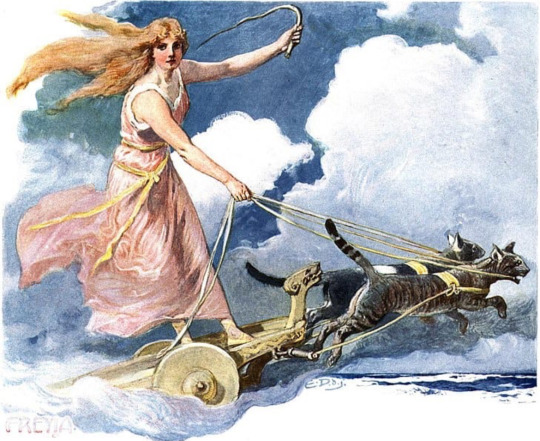
Freya: Norse Goddess of love, war, fertility and magic.
Freya, the Norse goddess of love and ruler of war and death. She mediated conflict between warring groups of Norse gods and established peace in Asgard. She is known for her beauty, sorcery, and sexuality, as well as for riding a cat-drawn golden chariot. Freya wears a falcon-feathered cloak that allows her to move quickly between heaven and Earth and has an enormous palace in Asgard where she celebrates with the souls she chooses from the battlefield. In one myth, she obtains the famous amber necklace, Brisingamen, from four dwarves by sleeping with them, beauty for beauty.

Oshun: African Goddess of love, beauty, prosperity & femininity.
Oshun is a goddess of love in the Yoruba religion. She is one of the 7 orishas and the source of power for all the other orishas. Oshun has the ability to make all things flow in the universe through her love and strength. She played a significant role in encouraging Ogun, father of civilization, to continue creating. Oshun is the only goddess who can carry messages between the mortal world and the Supreme Creator in heaven. In Nigeria, there is an annual ceremony called Ibo-Osun where women dance for Oshun during a feast of yams, with the best dancer winning Oshun's favor and becoming the village adviser on healing and fertility.
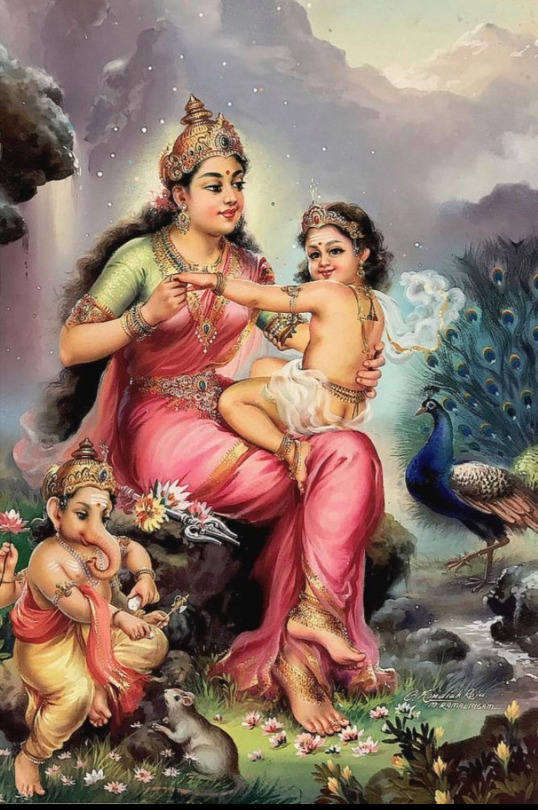
Parvati: Hindu Goddess of love, fertility, harmony and motherhood.
Parvati is a golden Hindu goddess known for love and devotion, forming a holy trinity with Saraswati and Lakshmi. She was born in the Himalayan mountains and embodies nurturing feminine energy. Parvati won over her husband, Shiva, through patience and determination in asceticism. Parvati is the creator of her son Ganesha, the elephant-headed god of wisdom. She is also worshiped for her strength and ferocity. In one legend, she transformed into the fearsome goddess Kali-ma to overcome & destroy demons who threaten the earth, showing her protective nature.

Guan yin: Buddhist Goddess of compassion, love, peace and kindness.
Guan Yin, originally a mortal princess named Miao Shan, was known for her compassion and kindness. Despite her father's cruelty, she devoted herself to helping others and performing miracles. After her death, she chose to remain in human form as a bodhisattva to help suffering beings, eventually becoming a goddess. By simply invoking her name, people can receive protection from harm. Guan Yin is often depicted in a white gown on a lotus throne and is revered by her followers as a symbol of love, compassion & purity. Her devotees often follow her vegetarian diet on her sacred days. Guan yin is not only the goddess of compassion, but the literal personification of it.
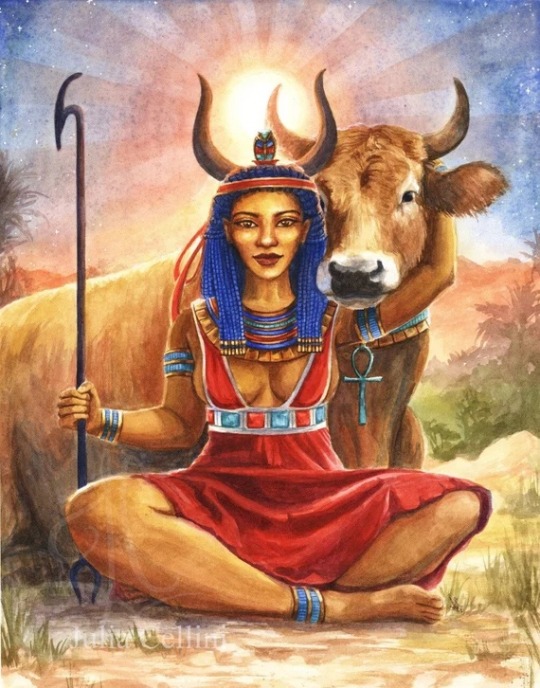
Hathor: Egyptian Goddess of fertility, love, womanhood and the sky.
Hathor, ancient Egyptian goddess of love and joy, has been revered for over 3,000 years. Known as the Gentle Cow of Heaven, she provided milk to the Sun God Ra, making him and other pharaohs divine. Hathor created the Milky Way and is often depicted wearing a crown with cow horns. She is worshipped through joyful ceremonies of music and dance and is the most beloved goddess in ancient Egyptian belief. Hathor is also the goddess of the Underworld, protector of females, and champion of romantic bonds. She can appear in different forms and her symbols are the sistrum and hand mirror.

Laka: Hawaiian Goddess of love, wilderness, the hula & music.
Laka is a Polynesian goddess of love and wilderness who taught humans the art of the hula dance. She is married to the fertility god Lono, and rain is considered a sacred time for them. Dancers in training build altars to Laka with her favorite flowers and plants, and offerings are taken down to the ocean after performances to thank her for her blessing. She is a Goddess who rules over all vegetation. Plants sacred to her are: maile, Lama, hala pepe, `ie`ie, ki, `ôhia lehua, `ôhelo, and palai.
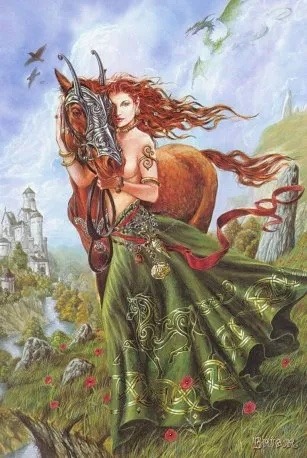
Aine: Irish Goddess of the summer, love, wealth and light.
Áine is a powerful and loving fairy queen in Irish legend, associated with agriculture, animals, and light. She is celebrated at the Midsummer Festival in Limerick, where people run up her hill to seek her blessing. She is also a survivor of sexual abuse in legends, where she shows strength and guides women to empowerment. Áine is depicted with red hair, a headband of stars, and surrounded by her animals. She can transform into a red mare who is unbeatable in speed.
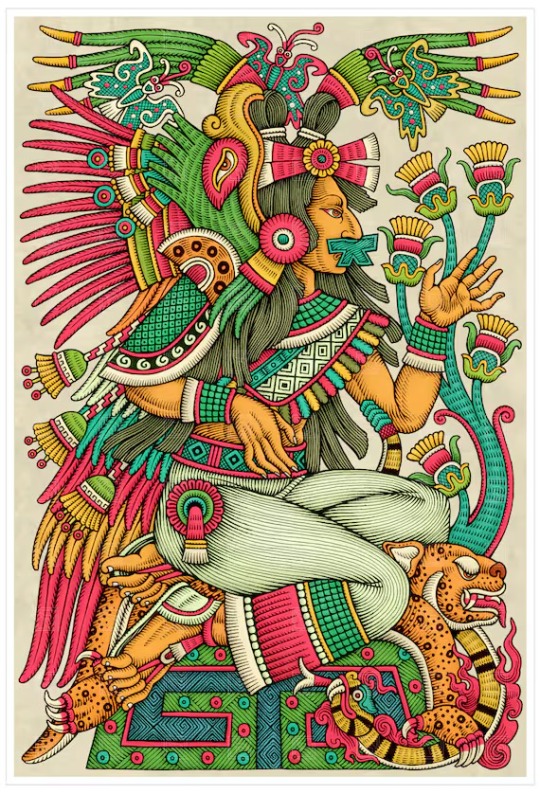
Xochiquetzal: Aztec Goddess of fertility, beauty, flowers and love.
Xochiquetzal was a powerful and complex Aztec goddess known for her beauty and seductive nature. She was worshipped as a patroness of lovers and prostitutes, encouraging love-making for pleasure rather than reproduction. Despite her associations with sexual relationships, she also had the ability to absolve humans of sins unrelated to sex. She was married to the water god, Tlaloc, and was considered a consort to the creator deity, Tezcatlipoca. Xochiquetzal was widely worshipped and honored through great rituals that included acts of sacrifice and confessions.
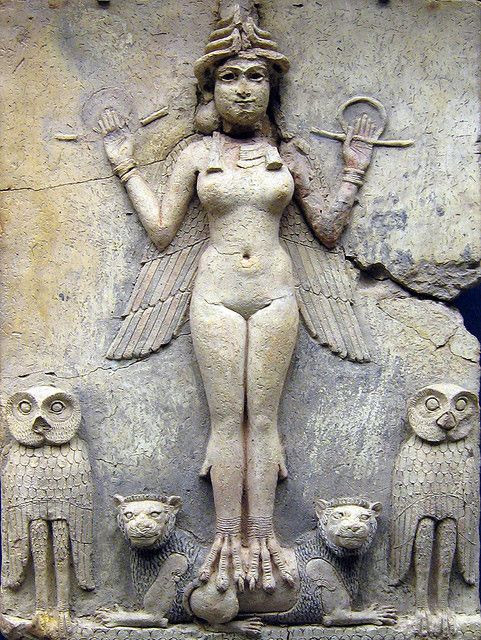
Ishtar: Mesopotamian Goddess of love, war, fertility and power.
One of the oldest goddesses in the world, Ishtar, the goddess of war and sexual love, was the queen of heaven. Ishtar is considered a member of the special class of Mesopotamian gods called the Anunnaki. Ishtar is often called Inanna, she is also an astral deity, linked to the planet Venus, and was worshipped widely in the ancient Middle East. She was known as the Queen of the Universe and had powers attributed to various other gods. Ishtar was the very first goddess of love, Mesopotamians described her in her many legends and poems as young and strikingly beautiful, with piercing, penetrating eyes.
#Religion#hindu mythology#hinduism#chinese mythology#irish mythology#greek deities#greek goddesses#greek mythology#norse paganism#norse mythology#greek paganism#buddhism#paganism#deities#goddesses#Parvati#ishtar#mesopotamian#aztec mythology#Xochiquetzal#aine#Laka#hawaiian mythology#Polynesian#egyptian mythology#hathor#Oshun#Yoruba#african mythology#lotus-list
148 notes
·
View notes
Text
The Internal Corrosiveness of Venus: Venusian Women & Self Harm
TW: self harm, abuse, suicide, violence, trauma
Claire had remarked that "Venus is internally corrosive whilst externally pleasant and Mars is externally corrosive but internally pleasant". This led me down a rabbit hole to try to understand whether this "internally corrosive" nature manifests as self harm & eating disorders and unfortunately, it does. Venusian women struggle with perfectionism and are extremely self-critical. Venusian energy is HARSH. Venus natives struggle to uphold a certain standard that they subject themselves too because if I'm being honest Venus is the OG "not like other girls girl", they believe they're better than others, and tbh in many ways they probably are but this also means they put undue pressure on themselves to keep being that way.
All Venusian naks are Ugra or "fierce" in nature and while I've talked about how Venusian violence and cruelty can be directed at others in my other posts, I think its worth mentioning how Venusians can be just as cruel to themselves. This is especially true of Venusian women as women internalise their problems while men wreak external havoc (like causing wards and killing people) but there are many male Venusians who struggle internally as well.
In ancient religions, Goddesses of love also had other functions or powers that had nothing to do with love
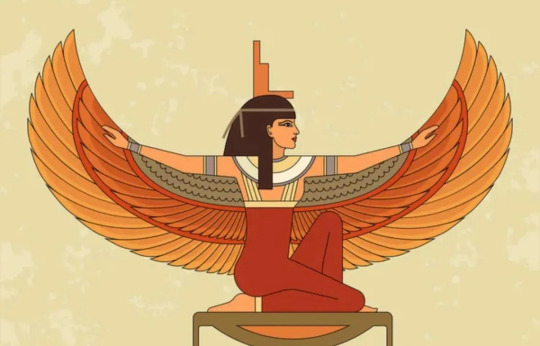
the Egyptian Goddess Isis was the goddess of love, healing, fertility, magic, and the moon. She was the goddess of life and magic, Isis protected women and children and healed the sick.
She was a great magician, whose power transcended that of all other deities.
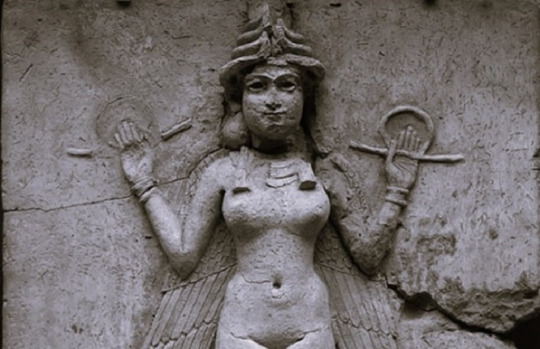
The Mesopotamian Goddess Ishtar is the goddess of love and sexuality, and thus, fertility; she is responsible for all life, but she is never a Mother goddess. She is also the Goddess of War.
I'm using these examples to show that the ancients had a more complex and nuanced understanding of Venusian energy. One cannot worship love without understanding that "war" is a consequence of it. Love & war are not very different from each other. When someone believes in something and is willing to die for it, we find that to be very honourable. Sometimes this belief leads men to kill others over it and depending on the cause, we describe the war as "good" or "bad" (kill a bunch of fascists and then its a "righteous" war, if you kill innocent people, then its an unholy war etc). Being at a state of war describes Venusian nature very well since Venus is also connected to royalty and if you're born into royalty, you get to live a very "exclusive" very privileged life that few get to enjoy but the stakes are also that much higher since you could be beheaded or executed or exiled and live a life that is far worse than the average person.
In this post I want to explore how this "state of war" can manifest internally in an ordinary Venusian and contribute to self harm, eating disorders and drug abuse.

Bella Hadid- Purvaphalguni Moon & Rising
Bella has admitted to smoking since she was a teenager and getting a rhinoplasty at 14. Her pro ana Tumblr from when she was a teen is infamous at this point. She has never openly spoken about it but it is widely speculated that she struggles with an eating disorder and possible drug abuse as well.
“I was the uglier sister. I was the brunette. I wasn't as cool as Gigi, not as outgoing,” she said. “That's really what people said about me.” I also feel like Venusians grow up feeling really ugly and completely unaware of their magnetism. They only really grow into their looks when they're older (obvs there are exceptions) and I think being bullied for what they have and don't have are also big themes.

Demi Lovato- Bharani Moon
Demi has spoken about struggling with self harm, eating disorders and drug abuse.
Lovato said, “growing up, I had been bullied in school,” saying she “felt like an outsider," and "like an outcast,” but then she became friends with a girl who was popular. “One day, I asked her ‘how do you have all these friends?,’” Lovato noted, and the girl asked Lovato “do you party?" Lovato explained, "She asked me, 'Do you drink?,'" with Lovato saying that this was her first experience with drugs and alcohol, adding, “we experienced a lot of stuff together, drinking and using, and growing up.” Bharani being an outcaste nakshatra resulted in Demi feeling like one growing one :(((

Taylor Swift- Purvashada Rising
Taylor opened up about her eating disorder in her documentary

Lindsay Lohan- Bharani Moon
LiLo has struggled with self harm, drug abuse and battled eating disorders
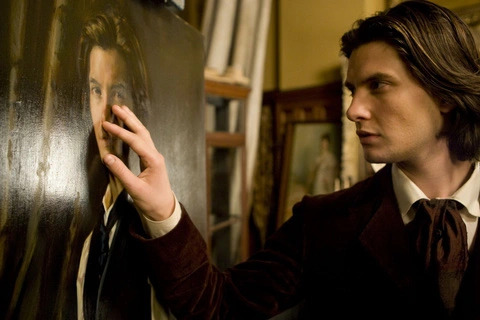
Oscar Wilde, Purvaphalguni Rising wrote The Picture of Dorian Gray
The plot goes like this : An attractive Englishman's image is captured in a painting that keeps him from ageing, when he exchanges his soul for eternal beauty. But for every sin that he commits, his image in the portrait rots.
This is a very deeply Venusian story, and very specifically Purvaphalguni esque because Purvaphalguni is the height of Venus. It can be said that its also true of Venusians in general. They are outwardly splendorous, they seem to have it all together but inwardly they tend to be inflicting wounds upon themselves in order to keep it all together.

Johnny Depp- Purvashadha Moon
He has also battled eating disorders, self harm and drug abuse.

Iggy Pop- Bharani Moon
"THERE IS EXTREME, there is legendary — and then there is Iggy Pop. Beginning in his earliest days with the Stooges taunting Ann Arbor frat boys and small town Michigan folk, Iggy made an art of excess: self-mutilation, self-exposure and self-destruction. His risky theatricality required an audience to respond, participate or get the heck out of there. And the sex and violence hardly stopped after the show was over."- this is how Rolling Stone described Iggy Pop and tbh this is a very Venusian description
In 1974, at his first solo concert dubbed The Murder of a Virgin. "Do you want to see blood?" Iggy asked the crowd, which howled affirmatively back at him. Then, at Iggy's urging, guitarist Ron Asheton, wearing a Nazi outfit, whipped Iggy repeatedly. Iggy began hurling racial epithets at a black spectator, hoping to goad the man into stabbing him with the steak knife he'd brought onstage. No luck, so he closed the set by carving an X into his chest himself.

Marilyn Manson- Purvashadha Sun
He has struggled with self harm in the past (there are images online if you're interested) and in 2013, he tried to simulate self harm on stage by holding a knife to his wrist in the middle of a performance??
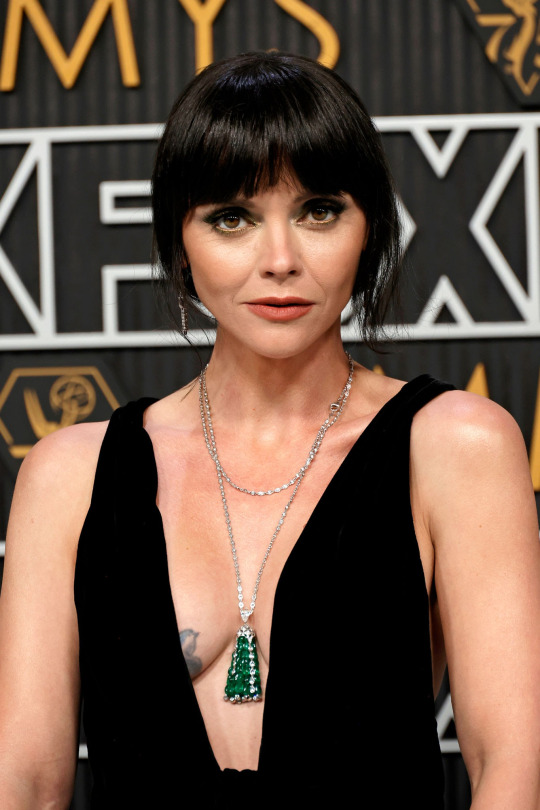
Christina Ricci- Purvashadha Moon
Ricci has said she suffered from anorexia as a teenager and was sexually assaulted as a child. “There was no discussion at that time about trauma, and about recovering from those things, about PTSD,” she said. As a result, she ended up “acting out and coping in ways that weren't good."

Robert Downey Jr- Bharani Moon, Mars in Purvaphalguni
its pretty well known that RDJ was severely addicted to drugs at one point and it started when he was a child and drugs was given to him by his dad:///

Megan Fox- Purvashadha Rising
"I have body dysmorphia — I don't ever see myself the way other people see me," Fox said. "There's never a point in my life where I loved my body, never, ever." "When I was little, that was an obsession I had of, like, but I should look this way,"
‘However, at a certain point, I went through some trauma in childhood and I developed a pretty severe eating disorder and manic depression, which runs in my family, so there was definitely some wrestling with chemical imbalance going on,’ she shared.
its interesting how so many of these natives begin struggling with these issues very early in life

Colin Farrell- Purvashadha Rising, Jupiter conjunct Ketu in Bharani
While he did not say that he had cut himself when he was younger, Colin Farrell had some self-inflicting behavior during his younger days. He spoke on The Tonight Show with Jay Leno and said that he used to actually enjoy pulling out huge tufts of his hair.

Pete Davidson- Purvaashadha Rising
'I used to bang my head against walls,' he admitted. 'If I couldn't deal with something -- if someone told me something sad or something I couldn't deal with I would bang my head against the wall, hoping I'd pass out because I didn't want to be in that situation because I couldn't handle that.

Melanie Lynskey- Bharani Moon
“I stopped throwing up, mostly. It took a while. But that was a big one. I had, for a very long time, been on this diet that was basically 800 calories a day, and if I ate anything over 800 calories, I would throw up,” she said. “I was never bingey. Sometimes I’d be starving, and I’d have another teacup of Special K. Then I’d be like, ‘Well, now I gotta throw it up.’”

Tila Tequila- Purvaphalguni Moon
On March 7, 2012, it was reported that Tequila had agreed to check into rehab after having reportedly "almost died" from an attempted suicide by overdosing on pills. The incident caused her to be hospitalized for a brain aneurysm. Tequila completed her rehab treatment on April 5, 2012.
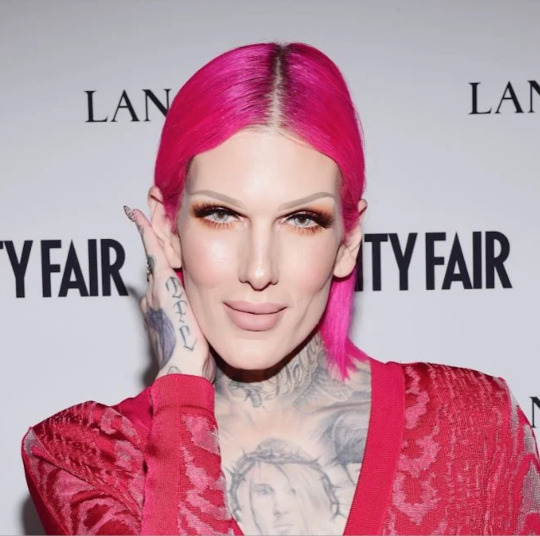
Jeffree Star- Purvashadha Moon
images of him self harming once went viral
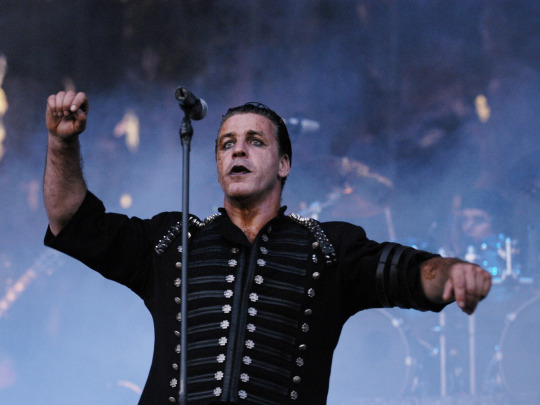
Till Lindemann- Purvashadha Sun
he's known for his SH scars and has even written poems about it in German??? its called "The poems: Knives on silent nights"

Portia de Rossi- Rahu in Purvashadha 2h
she's struggled with an eating disorder

Padma Lakshmi- Purvaphalguni Sun & Moon
"When filming "Top Chef," I consume about 5,000 to 8,000 calories a day,'' she wrote. "I typically gain anywhere from 10 to 17 pounds every season. Once I get home, what's taken me six weeks to gain takes me 12 weeks to take off. It's always a nail-biting extravaganza at fittings, praying that a few pretty dresses that came down the runway on a teenage model who is a size 0 will miraculously fit my 40-something body,'' she wrote. "Getting ready for the Emmys is always fun, and it's truly an honor to be nominated. But at the same time, in spite of my high metabolism, I worry each year that I'm not going to fit into anything nice. So, this year, I've decided my weight will not be my focus,'' she wrote. "If I need a bigger dress, so be it. That one day — or any day — on the red carpet isn't nearly as important as making sure my daughter doesn't measure her worth by her dress size."
i guess this is a more positive manifestation of Venusian self image struggles

Jessica Alba- Bharani Stellium (Sun, Mercury & Venus)
“I was meant to feel ashamed if I tempted men,” she said. “Then I stopped eating a lot when I became an actress. I made myself look more like a boy so I wouldn’t get as much attention.”

Katie Couric- Purvashadha Sun
“I wrestled with bulimia all through college and for two years after that,” she shared with Lovato while interviewing her, per Glamour. “I know this rigidity, this feeling that if you eat one thing that’s wrong, you’re full of self-loathing and then you punish yourself, whether it’s one cookie or a stick of gum that isn’t sugarless, that I would sometimes beat myself up for that. How do you have a healthy relationship with food, and say, ‘You know what, I can have one cookie and it’s OK?’ That is such a huge thing for people who wrestle with this.”

Zayn Mailk- Purvaphalguni Moon
In his 2016 autobiography, Zayn, he shared it would sometimes cause him to go two or three days without eating a single bite of food. “Something I’ve never talked about in public before, but which I have come to terms with since leaving the band, is that I was suffering from an eating disorder. It got quite serious, although at the time I didn’t recognize it for what it was,” he wrote. “When I look back at images of myself—before the final tour—I can see how ill I was. The workload and the pace of life on the road put together with the pressures and strains of everything going on within the band had badly affected my eating habits. Food was something I could control, so I did.”

Zoe Kravitz- Purvaphalguni Moon conjunct Ketu
“I think it was part of being a woman, and being surrounded by [fame],” she said. “I think it was definitely about being around that world, seeing that world. I felt pressured.” After playing an anorexic character in a movie, she hit her lowest of lows and was so malnourished that her immune system shut down. Months later, she decided to make a change. “I just felt it was different,” she said. “I don’t know… if a f—king spirit came over me and said: ‘You have to stop.’”

Mel C, Purvaphalguni Rising
"When I was in the Spice Girls, the stress of suddenly being thrust into the limelight led me into an unhealthy relationship with food and exercise,” she told The Mirror in 2012. “I became obsessed about what I ate and I cut lots of food groups, like carbs and protein, out of my diet. I survived on fruit and vegetables and little else.”

Nicole Scherzinger- Mars conjunct Rising in Purvaphalguni
"I really struggled with feeling like I fit in. I even had a hard time feeling like I fit into my own skin. I was really hard on myself and had a lot of struggles with self-esteem and a lot of insecurities,” she said. “Later on, that resulted in me having eating disorders because of my body dysmorphia.”
if you're reading this and struggling, you're not alone. please get help!! its not too late to turn things around!! youre so strong and you can do this!!
#venus#purvaphalguni#bharani#purvashadha#astrology notes#vedic astro notes#astrology observations#nakshatras#sidereal astrology#astrology#astro notes#astro observations#vedic astrology#astroblr
271 notes
·
View notes
Text
Dictionary of Esoteric Terminology

for your next poem/story (pt. 3)
Esoteric—designed for or understood by the specially initiated alone; may refer to the occult
Athame - a ritual dagger used in Witchcraft and Neo-paganism; has a black handle which is inscribed with symbols
Brahmarandhra - the "Gate of Purity"; a spot at the top of the head described as a hidden aperture; according to some, this spot is the exit for the enlightened soul upon the death of the body
Cromlech - a circle made of vertical stones, associated with Celtic worship of the Sun
Dark night of the soul - a phrase used by St. John of the Cross to describe the depression, isolation, and alienation which afflicts some mystics just prior to the realization of transcendence; hence the saying, "It is always darkest before the dawn"
Dracontia - many temples and sacred sites have been associated with dragons, probably because of their connection with primeval earth forces
Dweller on the threshold - a hostile spirit or being peculiar to each individual, comprised of the accumulated "bad karma" of that individual; such a being could be thought of as the personification of all that holds the seeker back from enlightenment; in this sense, it is like a negative Holy Guardian Angel
Ecstasy - "to cause to stand out"; a state beyond or outside reason and rationality; speaking in tongues may be thought of as an ecstatic trance
Flying ointments - lotion or cremes used to facilitate astral or etheric projection. These mixtures usually contain potent psychedelic agents such as belladonna, henbane, and mandrake
Genii - in Islamic tradition, they are an intermediate race of spirits between angels and people, who ruled the earth before Adam; also known as djinn, genn, or ginn
Hsuan te - virtue through emptiness; the cultivation of one's original nature
I shin den shin - "from my soul to your soul"; direct transmission without words
Khu - literally "clear" or "luminous"; the ancient Egyptian word for the immortal part of the soul; the causal body; symbolized by a plume of flame
Left-hand path - defined by some as the path of black magic; others, as the paths which stress doing and action over being and stillness; most magic systems tend towards the left hand path; most religions tend towards the right-hand path
Lustration - from Latin lustratus, "to brighten"; a ritual purification using water; rituals involving baptism or holy water are examples
Menstruum - an alchemical term for that from which all metals are derived; also mercury wherein gold is dissolved; "Our Water is a fire and a salt. This fire is the true Universal Menstruum of Vegetables, stronger than the fire of wood, since it transmutes the physical gold into a spirit."
Nagas - serpent spirits in Hindu mythology who lived in vast and beautiful temples and palaces beneath the earth
Ouroboros - the snake devouring its own tail; a Gnostic and alchemical symbol of cyclical nature, eternity, or the transcendence of duality; sometimes also used to symbolize the world of illusion
Phoenix - a mythical bird of incredible beauty; is the only one of its kind, living in the deepest desert, until at the end of its 500-year span it dies and is consumed in the funeral pyre of its own nest, then it rises from the ashes in the freshness of youth; generally considered to be a symbol of resurrection, immortality, and spiritual transformation
Prasad - the practice of offering sweets, fruit, or other food to a saint or deity
Pretas - the "hungry ghosts" of Buddhist and Hindu mythology; the ghosts of those who died burdened with great desire and are generally considered to be malevolent; supposedly they are continuously thirsty and hungry, but are unable to eat or drink; described as having huge distended bellies and pencil thin necks
Ruach - breath, wind, or spirit; represents the part of the soul which is the rational mind and the powers of reason; also refers to God's ineffable soul which He breathed into man at creation, thus making man in His image
Secret fire - an alchemical term for the hidden or elemental Fire
Simulacrum - an image used in sympathetic (imitative) magic that is considered to be the magical double of the thing represented; a "voodoo doll" would be an example of a crude simulacrum; in ancient Egypt, simulacra of slaves, animals, and other possibly helpful beings were entombed with their deceased owner; also used by some to describe the visualized vehicle or "body of light" used in astral projection
Speculum - any light refracting or shiny surface which can provide a focus for the attention; mirrors, bowls of water, and crystal balls have all been commonly used as speculi
Theurgy - from the Greek words theos, "god," and ergon, "work"; magic used to grow closer to God or become more godlike, to make changes for personal evolution and spiritual growth; the sacrament of the host could be considered a form of theurgy
Source ⚜ More: Word Lists
#esoteric#terminology#writing reference#dark academia#writeblr#langblr#spilled ink#writers on tumblr#poets on tumblr#writing prompt#literature#poetry#creative writing#lit#light academia#novel#writing inspiration#writing ideas#giovanni boldini#writing resources
119 notes
·
View notes
Text
I have posted about the Khazarian Mafia before... Here's 👇 more.
The Hidden Empire of the Khazarian Mafia 👇
The ancient Khazarian king, under the guise of adopting Judaism, covertly engaged his elite in dark practices of Babylonian black-magic, termed Secret Satanism. These rituals, deeply entrenched in Baal Worship, involved heinous child sacrifices, where the innocent were bled, their blood drunk, and hearts consumed.
Despite assurances to the surrounding nations led by the Russian czar, the Khazarian oligarchs seamlessly blended these satanic practices with Judaism, giving birth to a sinister, secret religion known as Babylonian Talmudism. This became Khazaria’s national religion, perpetuating the notorious evils known from its past.
Over time, the Khazarians escalated their atrocities, mastering identity theft from the travelers they murdered. This mastery over deception persists, alongside their gruesome, ancient rituals.
Retribution and Diaspora 👇
By 1200 AD, Russia, along with neighboring nations, had witnessed enough. They invaded Khazaria, aiming to dismantle the pervasive child sacrifice networks. This led to the birth of the term 'Khazarian Mafia' to describe the fleeing royal court, which continued its dark rituals in secret across Europe, sustaining their sinister legacy.
The Khazarian Mafia’s Modern Influence 👇
Centuries later, leveraging financial prowess, the Khazarians orchestrated political upheaval in England through Oliver Cromwell, facilitating regicide and sparking the English Civil Wars. This chaos paved the way for the establishment of the City of London as the financial nucleus of Europe, initiating the rise of the British Empire.
Centers of Power: Symbols of Occult Practices 👇
The City of London, the Vatican, and Washington D.C., stand as independent states, owned by the Rothschilds and the globalist elite, symbolizing their deep-rooted occult connections. Each houses an obelisk, representing freemasonic allegiance to Lucifer, whom they revere as the god of enlightenment, contrary to Christian beliefs. These obelisks are not just architectural feats but are emblematic of malevolent energies and the perpetuation of ancient, male-dominant power structures, echoing the rituals of Egyptian sun worship. 🤔
#pay attention#educate yourselves#educate yourself#reeducate yourselves#knowledge is power#reeducate yourself#think about it#think for yourselves#think for yourself#do your homework#do some research#do your own research#do research#ask yourself questions#question everything#hidden history#ancient history#history lesson#history#government corruption#government secrets#news#khazarian mafia#evil lives here#truth be told#lies exposed#it's biblical
55 notes
·
View notes
Text
The Ars Goetia didn't originate from "King Solomon" as it claims.
If it did, it wouldn't be heavily influenced by fucking Greek magic, since Solomon supposedly lived thousands of years before that period.
Medieval monks, who really wrote the Ars Goetia, had a very well documented habit of assigning parentage of magical texts to apocryphal figures like Solomon to make them seem cooler or more powerful. Particularly to christian adjacent figures, since otherwise these books would be considered hersey.
Even the word Goetia itself derives from the Greek Goêteia, meaning sorcery, specifically sorcery utilizing chthonic powers, or the Underworld: Gods, Daemons, and the Dead.
Goêteia comes from the proto Indo-European word goos, meaning to mourn, cry, or to wail; it comes from ancient funeral laments and mourning practices.
Also, Solomon likely never existed, hate to burst your bubble, but there has been zero archeological evidence found to support his, or his "father" king David's existence. Unlike other real kings of roughly the same periods, like King Nebuchadnezzar II.
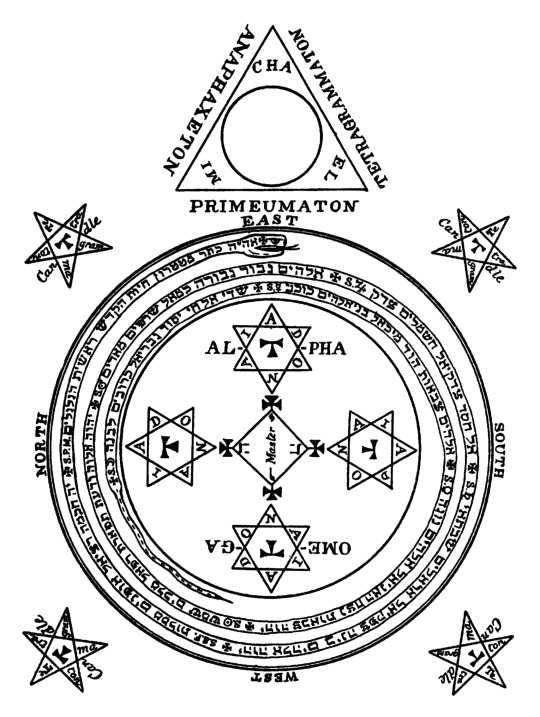
Even the fact that the magic circles within the Ars Goetia utilize the same coiled serpents and five-pointed stars that Greek goêteia uses, stemming from EGYPT and Egyptian practice, not some psudeo-biblical figure like Solomon.
But wait, there's more
Even the use of demons isn't Solomonic, nor is it Jewish or christian.
It's also fucking Greek.
The word demon itself derives from the Greek daemon, meaning earthly divinity (rather than heavenly/ouranic) or a messenger of the Gods.
It was taken and absorbed into early christian theology like many other concepts such as Tartarus due to early christianity rising in the same region.
Particularly the use of daemons in magic through evocation, or even invocation (calling them within yourself to become possessed, a hallmark of Daemonism and the Engastraitai) through ritual incantations of voces magicae and nomina barbara.
All of it is fucking Greek, no Solomon to be found.
I'll add a step further: even the use of Jewish aspects of magic within the Ars Goetia stems from Greek goêteia, as Greek goêteia was a syncretism of Greek, Jewish, Egyptian, and Mesopotamian magical and spiritual practices.
Fuck, just take a look at the Greek Magical Papyri sonetime if you don't believe it.


Hell, even take a look at the Coptic Magical Papyri, which was a syncretism of early christianity and what we would call "ancient Egyptian" religion and Magical practices:

See the similarities?
Solomon my ass.
☆ ☆ ☆
Learn more here
#ars goetia#goêteia#greek sorcery#ancient history#ancient greece#solomon#king solomon#medieval bullshit#etymology#chthonic#witch tips#witchblr#witch community#infernal devices#demonolatry#daemonism#demons#daemoniac#72 demons#deconstructing christianity#history#goetic demons#stolas goetia#goetic magic
108 notes
·
View notes
Text
Fritz Springmeier and Cisco Wheeler: Two Of The Most Dangerous Conspiracy Theorists Most People Have Never Heard Of
Fritz Springmeier is a conspiracy theorist who has written a number of absolute doorstoppers (the content of his books is poorly arranged and highly repetitive) claiming the existence of a global satanic cult that secretly controls the world - basically, your typical Protocols of Zion redux shit. Some of his books were written with Cisco Wheeler, a(n alleged) multiple system he claims to have deprogrammed from Illuminati mind control in 1994. Their work has been deeply influential on today's general belief in alter programming. Even if you've never read Wheeler and Springmeier's work directly, you may have come across their ideas. If you've seen anything about jewel programming, flower programming, alpha/beta/delta/epsilon programming, etc.? That's from them. Writers such as Unwelcome Ozian and Svali get their material from their work (in fact, Unwelcome Ozian's book Chainless Slaves literally copypastes some of their material), and people such as Ellen P. Lacter and Alison Miller of the ISSTD/RAMCOA-SIG frequently cite Svali. Furthermore, their work has had a huge impact on David Icke's reptilian alien conspiracy theories.
Here's a selection (yes, seriously, the following wall of text is only a small sample) of their claims from their trilogy series on Illuminati mind control (They Know Not What They Do - An Illustrated Guide To Monarch Mind Control, The Illuminati Formula Used To Create An Undetectable Total Mind Controlled Slave, and Deeper Insights Into The Illuminati Formula), which they wrote/published in the mid to late 1990's:
The Illuminati is a multi-generational satanic cult made up of thirteen elite bloodlines, who are working behind the scenes to enthrone the Antichrist in the year 2000. (It's been over twenty years, still no Antichrist.)
The Illuminati is behind the French Revolution and the Abolition movement. (Conspiracy theories invented by people who were pro-monarchy and pro-slavery.)
The Illuminati is pushing for gay rights as part of their plan to bring the Antichrist into power.
The Illuminati creates effeminate gay men by dosing pregnant mothers with progesterone and estrogen.
The Illuminati practices "trauma-based mind control," which in this context refers to an alleged (and very unsubstantiated) practice of inflicting brutal tortures to trigger the formation of alters, which will be programmed for various tasks, and made accessible to programmers via special codes and triggers.
TBMC practices often (though not always) take the form of satanic rituals. (Evil is always very, very theatrical in the minds of conspiracy theorists.)
The Illuminati's rituals are "based upon the most ancient mystery religions," because "one of the secrets of the Mystery Religions, especially the Egyptian Isis mystery religion was the ability to use drugs and torture to create multiple personalities." (Citation needed, Fritz.)
The European witch hunts were actually justified, because Europe was full of satanic practitioners of trauma-based mind control. (Seriously, what kind of ghoul claims the witch hunts were in any way justified?)
The Nazis' eugenics program wasn't actually about eugenics. It was actually a front for researching mind control, and that Project Monarch was based on research conducted by Dr. Josef Mengele, whom they claim was an "adept in Caballistic magic" assisted by "Askenazi hasidic black magic adepts." (This is a variation on the claim that Jews actually orchestrated the Holocaust)
Groups that are part of the Illuminati and practice Monarch mind control include (but are not limited to) The Catholic Church/Jesuits, Mormons, Assembly of God churches, the Watchtower Society, Hasidic Judaism, modern witchcraft, Druidry, Santeria, Freemasons, Golden Dawn, NASA, and professional baseball. (I think we can agree that some of these groups are very harmful, but that doesn't mean they're part of this conspiracy he's talking about.)
There are many different types of Monarch alter programming, including but not limited to gem programming, elemental programming, flower programming, color programming, Gumby programming, beehive programming, sex kitten programming, Greek letter programming, carousel programming, demon programming, alien programming, Mensa programming, Atlantis programming, paper doll programming, tumbleweed programming, waterjar shaking programming, Cinderella programming - it goes on.
"Body programs" can be installed to cause hearing problems, circulation issues, headaches, digestive problems, heart failure - basically, all those health problems that people who aren't conspiracy theorists would explain through allergies, stress, mental illness, or just common flaws of the human body.
Most slaves have "end-time programming," and will be activated to round up and kill opponents of the NWO when the time comes from the Antichrist to take power. (Again, it's been over twenty years.
Cisco Wheeler was programmed to be part of the Antichrist's elite imperial guard.
They claim, and I quote, "drugs, torture, hypnosis and MPD all work to enhance memory" and "most slaves have some photographic memory capability." They also claim that systemwide photographic memory can be created through brain stem scarring. (Conspiracy theorists literally made this up.)
The brains of Monarch slaves are more active than normal people's brains, because both sides of the Monarch slave's brain work simultaneously. (Both sides of everyone's brains are working all the time, that is literally how brains work.)
Mind control implants have been a thing since the 1960's. One woman had an implant disguised as a pubic hair. JZ Knight had an audio implant in her teeth that activated her to become a New Age leader. Microchip implants can affect DNA growth. "Fiber optic" mind control devices can be shot into the skin from a distance. (You can tell they rely on their audience to not understand anything about electronics in addition to neuroscience.)
Switching alters can literally change the color of your eyes. (It's impossible for someone's eyes to instantly switch color in the same way it's impossible for their skin to instantly change color.)
Fairy tales, fantasy media, movies, and television shows are full of deliberate programming. Some (but not all) of the media Springmeier and Wheeler implicate includes The Wizard of Oz, The Chronicles of Narnia, Alice in Wonderland, Disney films in general, A Little Princess, Star Trek, Star Wars, E.T., Tiny Toons, The Simpsons, Frankenstein, Bewitched, and Labyrinth.
Basically, any piece of entertainment that isn't morally pure from a far right Christian perspective is part of the Illuminati's plan to corrupt the youth and lead them down the patch of witchcraft and into satanism.
The story of the Golem is actually about a mind-controlled slave, and that "the main goal of the Cabala is to create a mind-controlled slave called a golem." Also, the Brothers Grimm were "Cabalistic Jews." (For a guy who insists he's not antisemitic, Fritz Springmeier sure likes to accuse people of being Jewish and demonize Jewish stuff.)
Famous Illuminati slaves include (but are not limited to) Marilyn Monroe, Elvis Presley, Roseanne Barr, Bette Midler, Madonna, and the Beatles. They claim Charles Manson was programmed with Beatles music.
(List break here because this whole thing was longer than Tumblr's allowed block length. Again, I emphasize, I am only posting a small sample of the BS they put in their books.)
The Illuminati's intelligence agencies have programmed "thousands upon thousands of slaves." The Naval Ordinance Test Station at China Lake was actually a Monarch programming facility, where thousands of babies were kept in cages. "Lots of 1000 babies was a small batch," and "many batches were 2000 or 3000 babies."
The average Monarch system is programmed with 1000 alters.
The Illuminati prefers to program blond, blue-eyed children without visible body defects or scars. (Funny how these conspiracy theorists keep claiming to hate white supremacy, then insist blond, blue-eyed children are special targets.)
The Illuminati has no trouble finding sadistic torturers because, and I quote, "essentially all human males can be taught to engage in sadistic behavior." In fact, the Illuminati's Mothers of Darkness are often necessary to make sure the male torturers don't go too far.
The Illuminati used chimpanzees to physically torture children. (The pair of them clearly do not understand how strong chimpanzees actually are.)
Babies can learn to read by six months old with the use of subliminal tapes.
Learning to write backwards makes you more likely to dissociate. (Bizarre variant on old 'Satan does things backwards to mock God' canard.)
Failed Monarch programming/TBMC causes autism. Autism is when children withdraw from the world and retreat into themselves. (If there's two things we know about autism, it's that it's not traumagenic, and it's not about withdrawing from the world to retreat into your own mind.)
If you hang someone upside down long enough, they will begin to reverse pain and pleasure. Yeah, supposedly, if you physically reverse a person's body, their mind will start reversing, too. This, apparently, is how we get kinksters who like pain.
Scars can be made more visible via hypnotic command, and this has been a thing in the occult world for centuries. (Modern version of the Devil's Mark/witch's tit myth.)
Moles are a sign of prior electroshock torture. (Another modern version of the Devil's mark/witch's tit myth.)
King Hezekiah - yes, the Biblical King Hezekiah - was a child victim of satanic ritual abuse. (Of course the Bible chapter they cite - 2 Chronicles 29 - mentions nothing of the sort.)
Direct quote, "Vice-President Al Gore is a vampire and carries a briefcase of blood with him." (Modern conspiracy theorists love to sling blood libel at Democrats.)
Hillary Clinton is an Illuminati Grand Dame and programmer. (Gotta accuse those Democrat women of being witches.)
Roma people practice cannibalism. (Pure anti-Romani racism.)
The Illuminati has the cure for AIDS.
Adrenochrome is a secret black market drug. (This is a modern form of blood libel.)
Snuff pornography is a real thing. (It's really not.)
Being on Prozac makes you susceptible to becoming homicidal or suicidal if you're exposed to certain electromagnetic frequencies. The Illuminati is deliberately exposing people to these frequencies to increase these behaviors in order to get anti-gun legislation passed.
Cellphone towers emit electromagnetic frequencies that can control people's minds.
Putting one's hands behind one's head is a secret Illuminati hand signal meaning "I'm master." Folding one's hands is a secret Illuminati symbol for "you can't break the circle." Thumb-twiddling is an Illuminati hand signal for S&M. Other normal, everyday hand positions/gestures/movements are given equally conspiratorial explanations.
The "Vulcan peace sign" is an Illuminati/occult greeting. (This claim isn't just demonizing Star Trek - it's antisemitic.)
High-ranking members of the Illuminati hold fancy cannibal dinner parties and feed children to lions and tigers.
Lots and lots of child sacrifice happens. There's even rituals where children sacrifice other children and eat their hearts.
The shape of your skull affects your personality, and the Illuminati creates permanent personality changes by changing the shapes of people's skulls. (This is literally phrenology, which is pseudoscience.)
The Illuminati implants real, actual demons into victims, which can only be removed through Christian deliverance. Also, accepting Jesus as one's Lord and Savior is the only way for victims to truly heal, no ifs, ands, buts, or maybes.
Down's Syndrome can be cured with cranial manipulation. (Craniosacral therapy is quackery.)
Many people diagnosed with schizophrenia have actually been given implants by the government.
Ronald Reagan is "our future president." (Yes, Fritz Springmeier wrote these words during the Clinton administration.)
The US government has built 140 massive underground bases for various purposes, including housing "several varieties of aliens."
The Illuminati has been creating human clones and biological robot doubles for years, and has created such doubles for politicians such as Jimmy Carter. (Allegations of clones and duplicates goes back to the witch hunts, where witch hunters would claim Satan conjured up doubles for witches so their families wouldn't miss them while they went to the witches' sabbath. Also, it's a form of dehumanization.)
Therapists treating victims of alter programming/trauma-based mind control should separate their clients from their programmer (read: isolate them from friends, family, and acquaintances) and hold multi-hour therapy sessions to help them remember their abuse and discover their hidden alters (read: make sure they're constantly exposed to this narrative so they'll start to internalize it and begin "remembering" what you want). Wheeler outright says that the "better therapists" will wear down their clients with lengthy question and answer sessions. She recommends having a team of therapists to work on a single client, with a female mother figure and male father figure.
Depression is a sin that comes from a lack of faith.
Trance-Formation of America is a good example of how mind control victims are treated. (Trance-Formation of America is also part of the Project Monarch/alter programming conspiracy theory.)
Full quote, "All Illuminati victims of mind-control have been terrorized by their abusers about how God hates them and how God will punish them for their badness." (In other words, much of what these people are chalking up to alter programming/TBMC can very easily be explained by religious trauma from being brought up in a conservative Christian environment.)
Again, these are the types of claims made by the two people from which all of this stuff about all of these specific types of alter programming, body programs, etc. originate. Whether or not people on RAMCOA sites acknowledge Springmeier and Wheeler outright, much the stuff they're claiming can very much be traced back to them.
Now, some of you reading this might still be wondering whether the alter programming could more than a conspiracy theory; like, maybe there's actually people out there who are really doing this, even if they aren't involved in some grand sinister conspiracy. And the answer is still no.
First, this conspiracy theory effectively proposes that there was an epidemic of people engaging in this very specific practice back during a time period when the most that people knew about DID (if they knew about DID at all) came from from the Sybil book or movie (and the real "Sybil" never had DID); or even before that point, if we include the people who claimed they were programmed in the 40's-60's. The idea that all of these unconnected people all independently came up with this is simply beyond absurd. If this was a real practice being done out there by any significant number of people at all, extensive technical literature describing the procedures in full detail would have to exist. This literature would at some point have been found in the homes, workplaces, etc. of programmers. Alter programming has allegedly been practiced since at least the 1940s, and not a single piece of this literature has ever been found anywhere; not on the most depraved 4Chan user's computer, not in the edgiest occultist's library, and not in the home of any child molesting priest. The only literature that describes these supposed practices comes from conspiracy theorists, and they aren't nearly detailed enough to constitute any kind of actual manual. It's very telling that when Fritz Springmeier et al name books that supposedly contain this sort of information, the books either contain nothing of the sort (for example, old grimoires), or have no evidence of ever existing in the first place.
And while it's true that extreme trauma can cause dissociation and the formation of alters, that's about the only thing this conspiracy theory gets right. Everything else is like some kind of edgy sci-fi take on it, about as accurate to real neuroscience as Jaws is to real sharks. The people who thought they saw evidence of "structured DID" back in the day made a similar error to the people who look at natural hills and mountains and think they're seeing ancient pyramids, or look at Bimini Road and actually think it's a real man-made road rather than a natural rock formation. People would look at someone having literally any trauma response or distress behavior (which may or may not have actually involved DID or OSDD), and think they were seeing the work of some diabolical mastermind. Basically, it's a form of pareidolia. The therapists would share their beliefs with their patients, who would internalize it in their own minds, and come back with stuff that seemed to confirm their therapists' suspicions.
What's going on here is a pretty straightforward case of confabulated memory cultivation. This kind of thing happens all the time in places like the New Age starseed movement, where people start learning New Age mythology and what kind of alien beings they supposedly could have been in a past life. Whether through hypnosis, vivid dreams, or even incredibly vivid flashes of mental imagery out of the blue, people begin "remembering" supposed lost memories that simply cannot be real because real historical evidence contradicts them at nearly every turn. You can see examples of this for yourself over here and over here.
Confabulated memory cultivation isn't really practiced on purpose, per se; at least, not typically. What happens is you have people who legitimately believe that they can retrieve lost memories, whether from their childhoods or from a past life. And unlike literature that tells you how to program alters, literature that describes methods to supposedly retrieve lost memories exists in abundance. People have made jobs out of allegedly helping people retrieve lost memories ever since people believed that was a thing they could do.
The alter programming conspiracy theory was part of a mental health fad where people believed that repressed memories were the root cause of many ordinary mental and physical health problems. Symptoms of anxiety, depression, chronic stress, PTSD, C-PTSD, BPD, schizophrenia, bipolar, autism, ADHD, allergies, mast cell activation syndrome, fibromyalgia, and more are all chalked up to repressed memories and alter programming. Very, very tellingly, many of the symptoms described in this type of literature are exactly what you'd expect from religious trauma in a conservative Christian environment. In fact, the alter programming conspiracy theory implicitly denies that it would be possible to develop serious trauma from the kind of abusive parenting that conservative Christian culture encourages and condones.
Also, the fact that the ISSTD/RAMCOA SIG continues propagating the claims made by Springmeier and Wheeler definitively shows us that the purpose of ISSTD/RAMCOA-SIG is repackaging Satanic Panic and far right conspiracy theories more generally, and that the very term "Ritual Abuse, Mind Control, & Organized Abuse" is in fact a Trojan horse intended to slip all of this stuff back into legitimate psychological discourse and discussions of systemic abuse, religious abuse, human trafficking, etc. The fact that people cannot question RAMCOA without being accused of denying these things shows that this is working out really well for the the ISSTD/RAMCOA SIG right now.
I'd like to emphasize that I am not trying to say that people who were led to believe they were victims of alter programming haven't been severely abused in some way, or that none of them have DID. This conspiracy theory is very much built to prey on these sorts of people. The point I am making is that it is indeed a conspiracy theory, and that it harms many people, both with and without DID.
Now, I know there's some folks out there who have been led to believe that real evidence of widespread alter programming or even widespread ritual abuse (ie, the practice of abusive occultic rituals) were found, but conservative Christians simply co-opted real events to attack the people they didn't like. And that simply isn't what happened. It was the conspiracy theorists - people like Dr. Lawrence Pazder and Mike Warnke - who positioned themselves as ritual abuse experts and instructed police and therapists on what to look out for. It was always a literal witch hunt from the very beginning.
If you are looking for any kind of mental health support, or wish to talk about real forms of abuse, I strongly recommend avoiding terms like Satanic Ritual Abuse, Ritual Abuse, Mind Control, & Organized Abuse, Organized Abuse, Organized Extreme Abuse, Ritual Abuse, Mind Control, Trauma-Based Mind Control, and so on, because these are all terms created and used by conspiracy theorists. We have other terms to talk about real abuse, including spiritual abuse, religious abuse, systemic abuse, institutional abuse, sexual abuse, sex trafficking, and so on.
Likewise, if you see someone using these terms, you know that their information is downstream from conspiracy theorists, and therefore, is highly suspect. If you're looking for any sort of mental health/trauma support whatsoever, be very wary whenever you see someone using them. Even if they mean well, what they're putting out there is still contaminated by the myths and misinformation of the Satanic Panic, which will never support actual healing.
#fritz springmeier#cisco wheeler#conspiracy theorists#conspiracy theorist#conspiracy theories#conspiracy theory#conspiracism#project monarch#monarch mind control#alter programming conspiracy theory#alter programming#ramcoa#tbmc#trauma based mind control#organized abuse#ritual abuse#mind control#satanic panic#sra#satanic ritual abuse
134 notes
·
View notes
Text

[Title]: Taglocks: How to Target a Person or Place
Related to Taglocks
Threshold Theory Binding Basics Introduction to Gnosis Energy Work Fundamentals Anchors Energetic Constructs Spell Logs Path of Least Resistance Blood Magic Spellcasting Basics
Introduction
A taglock stands as a fundamental element of spellcasting, bridging the material world with the energies, places, and people practitioners seek to influence. A taglock is, at its core, a tangible object that establishes a direct link to a specific target. This object serves as a conduit through which energy can be directed, manipulated, or harnessed in various spellwork and ritualistic practices.
The term "taglock" itself is derived from the concept of 'tagging' or marking something with a specific identifier, and 'lock,' which implies securing or anchoring a connection. Thus, a taglock effectively anchors the essence or energy of a person, place, or thing to the practitioner’s ritualistic focus. This tangible item could be something inherently connected to the target, such as a personal belonging or a biological sample, thereby ensuring that the magical workings are precise and targeted.
History
The use of objects to establish a connection with a person, place, or entity is a practice that can be traced back to ancient civilizations. The principles underlying taglocks are fundamentally tied to the broader concepts of sympathetic magic and animism, both of which have been integral to human spirituality and ritualistic practices for millennia.
Ancient Civilizations
Mesopotamia and Egypt: In ancient Mesopotamian and Egyptian cultures, magic was an integral part of daily life and religious practice. Objects such as amulets, talismans, and personal artifacts were often used to protect, heal, or curse individuals. These items were believed to carry the essence or influence of the person or deity they were associated with. For instance, in ancient Egypt, hair, nails, or pieces of clothing were sometimes used in magical rituals to exert influence over an individual, embodying the early concept of taglocks.
Greece and Rome: The Greco-Roman world also embraced the use of personal items in magic. The Greek Magical Papyri, a collection of ancient magical texts, includes numerous spells that call for the use of personal objects such as hair, nails, and garments. These items were believed to create a sympathetic link to the target, enabling the practitioner to influence them from a distance. This practice reflects the underlying principle of sympathetic magic, where "like affects like," a foundational concept for the use of taglocks.
Medieval and Renaissance Europe
Folk Magic and Witchcraft: In medieval Europe, the use of personal items in folk magic and witchcraft was widespread. Cunning folk, wise women, and witches often employed objects belonging to their clients or targets in their spells and rituals. These objects served as conduits for magical influence, much like modern taglocks. For example, poppets (dolls representing individuals) were frequently stuffed with hair, nails, or clothing scraps from the person they were intended to influence.
Grimoires and Magical Texts: The grimoires and magical texts of the Renaissance period also provide evidence of the use of personal items in magic. The "Key of Solomon," a well-known grimoire, includes instructions for using personal items in rituals to bind or influence others. The "Malleus Maleficarum," a notorious witch-hunting manual, documents the belief in and fear of witches using such items to cast spells.
Indigenous and Non-Western Cultures
African Diasporic Traditions: In various traditional religions and spiritual practices, the use of personal items for magical purposes is common. For example, in Vodou and Hoodoo, personal items such as hair, clothing, and personal effects are used in rituals and spellwork to create a link to the target. These items, often referred to as "personal concerns," function similarly to taglocks by establishing a direct connection between the practitioner and the individual they wish to influence.
Asian Traditions: In Asian cultures, particularly in traditional Chinese and Japanese practices, the use of personal items in magic and healing is also prevalent. In Chinese folk religion and Taoist magic, personal items are used in rituals to heal or protect individuals. Similarly, in Shinto practices in Japan, personal items can be used in purification and protective rituals.
Modern Revival and Adaptation
Contemporary Witchcraft: The modern revival of witchcraft, particularly since the mid-20th century, has seen a resurgence in the use of taglocks. Contemporary practitioners draw on historical and cross-cultural practices, adapting the use of personal items to fit modern magical frameworks. Books on witchcraft and magic frequently discuss the use of taglocks, emphasizing their importance in creating a tangible link to the target.
Neo-Pagan & Occultist Movements: Neo-Pagan movements, such as various forms of Wicca, have incorporated the concept of taglocks into their practices. These movements often emphasize the importance of personal connection and the use of physical objects to ground and direct magical energy. While these practices have evolved, they continue to reflect the ancient principles of sympathetic magic and the use of personal items to establish a magical connection.

How do Taglocks Work?
Energetic Connection and Sympathetic Magic
In the practice of traditional witchcraft, the efficacy of a taglock lies in its ability to establish a connection between the anchored spell and the target. This connection is primarily rooted in the principles of sympathetic magic, a foundational concept that posits that objects can influence one another through their inherent similarities or direct associations; as well as energetic entanglement, the process through which identical energetic compounds can interact without direct spatial contact.
Sympathetic magic operates on the premise that a taglock, due to its intimate connection with the target, acts as a proxy or representative. The energy directed towards the taglock is believed to transfer seamlessly to the target, facilitating the intended transformation or influence. This is often articulated through the maxim "like effects like," underscoring the principle that items connected by similarity or direct contact can impact each other even when physically separated.
The energetic link established through a taglock is akin to an invisible thread that connects the practitioner’s will to the target. This thread is not a physical entity but an energetic conduit through which influence flows. The strength and clarity of this connection depend on the nature of the taglock and the amount of genetic material it carries. For instance, a strand of hair or a piece of clothing with trace amounts of skin cells creates a more potent connection than a mere photograph or written name. This is due to the energetic compounds that are unique to each person’s genetic sequence and their higher probability to be energetically entangled. While a sympathetic connection works well in most situations, having an energetic connection is significantly more reliable.
Incorporating Taglocks into Spellwork
Anchoring is a necessary step in the utilization of taglocks, involving the establishment of a lasting connection between the taglock and the target within a spell. This process entails affixing the taglock firmly to the desired magical outcome, thereby ensuring that the energy directed through the taglock manifests effectively in the target’s life. Anchoring is not merely about physical attachment but the energetic binding of the taglock to the spell's energetic design.
To anchor a taglock, the practitioner must first select a taglock that has a strong and clear connection to the target. The effectiveness of anchoring is directly proportional to the relevance and potency of the chosen taglock. The next step involves ritually preparing the taglock. This can include cleansing the taglock to remove any extraneous energies, thereby ensuring that it is a pure conduit for the spell’s purpose. Common methods of cleansing include using elements like water, fire, or salt, each method tailored to the nature of the taglock and the spell.
Once cleansed, the practitioner imbues the taglock with the desired energy through a ritual. This may involve chanting, the use of symbols, or the invocation of natural forces to charge the taglock. The ritual acts as a ceremonial binding, infusing the taglock with the energy necessary to enact the spell’s purpose. During this process, the practitioner focuses intensely on the connection between the taglock and the target, reinforcing the energetic link.
Finally, the taglock is integrated into the spell structure. This can be achieved by pulling an energetic conduit from the taglock and into the spell’s anchor. This way, a solid circuit can be established. The key is to position the taglock in a manner that aligns with the natural flow of energy, ensuring that the spell’s influence is directed towards the target with minimal resistance. Just placing a taglock into a jar with other elements has a chance of establishing its own energetic connection, however it is not very likely.

Unbinding Taglocks
Energetic Dismantling
The most effective method of unbinding a taglock is energetic dismantling, which requires the careful and deliberate dismantling of the energetic connections that have been established during its use. Energetic dismantling is a method that involves consciously deconstructing the energic structures and pathways that link the taglock to its target. This process ensures that the influences exerted through the taglock are effectively neutralized, preventing any residual effects from lingering.
The practitioner utilizes their energetic awareness in order to visually and mentally map out the energetic connections emanating from the taglock. This step is crucial, as it allows for a clear understanding of how the energy has been structured and directed. Once these connections are identified, the practitioner then introduces energetic compounds that are of the opposite frequencies of the energetic connections. This will cause the energetic connections to cancel out and become inert.
After all the connections have been severed, the practitioner proceeds to cleanse the taglock to remove any residual energy. This can be done using elements such as water, salt, or incense, depending on the nature of the taglock and the preferences of the practitioner. The cleansing process ensures that the taglock is fully neutralized, rendering it inert and free from any remaining influence.
Anchor Destruction
Anchor destruction is a more direct and often physical approach to unbinding taglocks. This method involves the literal destruction of the taglock itself, effectively dismantling the anchor that connects it to the target. Anchor destruction is particularly effective when the taglock is a physical object that can be easily manipulated or disposed of.
The first step in anchor destruction is to identify the nature of the taglock and choose an appropriate method of destruction. For physical objects, this could involve burning, breaking, or burying the taglock. Each method carries its own symbolic significance and energetic impact. For instance, burning a taglock in a fire ritual symbolizes purification and transformation, reducing the object to ashes and dispersing its energy into the air. Breaking the taglock into pieces represents a forceful severing of the connection, while burying it in the earth signifies grounding and neutralization.
During the destruction, the practitioner may recite incantations or prayers to reinforce the unbinding process, so long as they do not cause the practitioner to break their state of gnosis. This could serve to solidify the practitioner's will and direct the energy towards severing the connection. As before, cleansing is also recommended afterwards.
Cord Cutting (Not candle divination)
Cord cutting is a technique used to sever the energetic cords or ties that bind the taglock to its target. These cords represent the strings of fate, or channels through which energy flows, maintaining the connection established by the taglock. Cord cutting is a powerful method for releasing these ties, allowing both the practitioner and the target to move forward unencumbered.
To perform a cord-cutting ritual, the practitioner begins by grounding and centering themselves, creating a stable foundation for the work ahead. The taglock is then placed before the practitioner, and a clear intention to sever the energetic cords is set. This intention is crucial, as it directs the focus and power of the ritual.
A common tool for cord cutting is a ritual knife or athame, though other tools such as scissors or even one’s hands can be used depending on the practitioner’s preference. The practitioner then uses their awareness to feel for the energetic cords extending from the taglock and uses the tool to cut through these cords. Each cut is made with deliberate precision.
During the process, the practitioner may also employ visualization techniques to enhance the effectiveness of the ritual. This could involve imagining the cords dissolving into light, evaporating like mist, or being absorbed back into the earth. These visualizations help to solidify the disconnection on both an energetic and psychological level so long as one is aware that visualization in and of itself is not a spell nor energy work.
After the cords have been cut, the practitioner performs a cleansing ritual to purify the space and themselves. This ensures that any residual energy from the cords is fully cleared away, preventing any unintended consequences or lingering attachments. The taglock, now devoid of its energetic ties, can be safely disposed of or repurposed as desired.
Cord cutting not only releases the target from the influence of the taglock but also frees the practitioner from the energetic investment in the spell. This liberation allows for a fresh start, unburdened by the previous connections, and opens the way for new magical endeavors.

Taglock Alternatives
Taglock alternatives are useful in situations where obtaining a physical item linked to the target is impractical or impossible, such as when working at a distance or in covert operations. Methods like visualizations, sigils, memories, elemental representations, and astrological correspondences may still establish a sympathetic link to the target. However, these alternatives often lack the direct energetic connection that taglocks provide, making them less efficient. The inherent uncertainty and reduced potency of these methods can lead to weaker or less reliable spell outcomes, requiring greater effort and near flawless spell design from the practitioner to achieve the desired effects.
Sigils and Symbols: Creating a unique symbol or sigil that represents the target can be a powerful tool. This symbol can be charged with energy and intent to direct the spell's effect.
Visualization Techniques: Instead of using a physical object, practitioners can employ detailed mental images of the target. This involves deeply focusing on the target’s attributes and characteristics during the spellcasting process.
Memories of an individual or location: Using specific memories that encapsulate the essence or identity of the target can serve as a focal point. Repeatedly recalling or chanting the target’s name or a descriptive phrase can help direct the spell.
Elemental Representations: Associating the target with a particular element (earth, air, fire, water) and using that element in the spell can establish a connection. For example, water could be used to represent a person with a flowing, adaptable nature.
Astrological Correspondences: Using the astrological sign, planetary influence, or birth chart of the target can provide a non-physical link. Aligning the spell with specific astrological times or planetary hours that correspond to the target can enhance the connection.

Patreon shoutouts
Thank you for your continued support! My patrons help me maintain the drive to create content and help me keep food in my pantry. My patrons of Mystic tier and higher had access to this article a week before it was public! To see other perks of supporting me, click here!
Thank you for your continued support:
Megan Kipp!
Cosmicaquamarie
Maxim
To learn more about me or view my Masterpost, click here.
This post was reviewed and edited for easier reading by ChatGPT.
#taglock#traditional witchcraft#secular witchcraft#eclectic witchcraft#energy work#beginner witch#baby witch#witchcraft resources#witchcraft guide#informational post#Gspell
63 notes
·
View notes
Text
This long ask came in, and it's so ridiculous I'm going to have to chop it up and respond to it piece by piece.
Because it's that's fucking dumb.
I will, in fact, get pretty hostile in this -- because I've been getting a shit ton of this. So, before we start -- I am not a Christian. I am not fond of a lot of what's been done in the name of Christianity. This is not a defense of anything ever done in the name of the Christian Church.
But I am sick and tired of uninformed bullshit, and this ask is the latest in an unending pile of this nonsense I've gotten this week.
So buckle up, buttercup.

So time to brace myself for something stupid. Like reusing "monuments and temples" is like a textbook example of syncretism, but let's see what their examples are.

Stolen from who, buckaroo? Stolen from fucking who.
I'm pretty sure I've seen the unsourced meme all three of those claims come from, and literally there's no evidence. You're going to go into some Horus bullshit, aren't you? Written by someone who outright lied about actual Egyptian mythology.
You're just making shit up here -- like the twelve disciples? Say what you will, but those were, like, actual guys. Crucifixion was literally a common means of execution by the Romans. Why would they "steal" that when it was the way a lot of folks were executed.
Does your ass not possess an ounce of critical thinking skills?
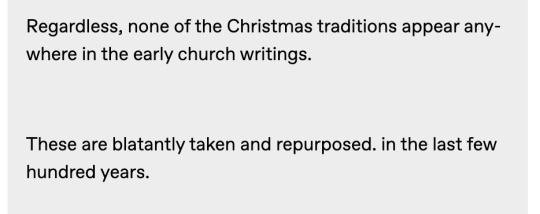
I need you to fucking think about this for a few seconds.
If a tradition came into being in the last few hundred years, whomst the fuckst do you think came up with it? If the people who invented it were Christian... it was created by Christians. Like pull your god damned head out of your ass. "Gee, we don't have a lot of written records about what non-Christians did around the solstice -- but somehow centuries after the Christianization of Europe we're just going to somehow know about an ancient Pagan tradition and steal it! For reasons!"
There are pre-Christian traditions that have been incorporated through syncretism, but also... a living culture sometimes invents new shit. It happens.

"Elves and flying raindeer and a magic man who can come into your home are not the result of syncretism." Well some of those are the results of Department Stores and Capitalism, so you're like half-right on accident there.
Santa is actually a classic example of the fusion of multiple figures -- mostly Father Christmas and Saint Nicholas. Saint Nicholas was a a fucking actual guy who got stories made up about him and embellished through folklore. Father Christmas may have been adapted from a pre-Christian figure from the British Isles, but it's one we literally know nothing about if its true.
...and decorating the hearth... is literally syncretism. That's, again, like textbook. The church didn't tell people to do that. People just kept doing that in spite of the church.
You have a fundamental misunderstanding of how culture, history, and even religion work.
You overripe aubergine.
228 notes
·
View notes
Note
Hi! Hope you’re having a great day! When Crowley said that both he and Aziraphale speak every language in the world, how do you think that would work? Like, do they have the potential to? Or do they just switch to a language by default? Do they kinda have to spend some time around a certain region to speak those languages? Thank you for your answer!
Hello there! Hope you're having a great day yourself. *all the chocolate cake for you* 💕 What a cool question! Sorry it took me awhile to get back to you. I'm flattered to have a bit of a backlog happening here 😳 & I also was taking some time to mull this one over as it's a really fun topic.
What might it mean for Crowley and Aziraphale to "speak every language in the world?" and how might that work?
I've got a couple of ideas that also involve a look at Aziraphale's halo and the "one big avocado" joke while we're at it...

I think that this question contains a bit of chicken-and-the-egg. To show you what I mean by that, I want you to look again at the scene in the gif below but, instead of looking at Muriel, Crowley, and Saraqael in the foreground of it, look at Michael and Uriel in the background:

If you look at the scenes of Crowley and Muriel watching the footage of Gabriel's trial, you'll notice that Heaven's Zoom things-- that are somewhere between a skyscraper and a computer tower in appearance-- are marking information in what are known as ideographs.
An ideograph is a symbol or a picture that stands for a word or a concept. The foundations of every language on Earth are all rooted in different forms of ideographs that, along with some basic sounds, are believed to have evolved towards letters and words and into the modern spoken and written languages we use today. Some of the most well-known ideographs that we know of include things like ancient Egyptian hieroglyphics, the Phoenician alphabet, and the runic alphabets.
[I did a post on Crowley's use of "ngk" that talks about its origins relating to the Greek alphabet and touches on ideographs a little, if you're interested in more on this topic.]
These same symbols in the "Heavenly Zoom" screens alongside Michael and Uriel in the Gabriel trial video are also being shown as the timestamp/data markers on the video Crowley and Muriel see of Gabriel riding the lift/elevator down to Earth when he ran. Runes are also part of the markings of the magic circle in the bookshop floor that Aziraphale uses to connect to Heaven.

He and Crowley cover up that foundational circle with a rug decorated with lotus flowers, symbolic of Eastern spiritual influences and trauma recovery, and appear to more commonly use the spot that can be used to contact Heaven as a meditative spot. It's also where they do the Gabriel miracle, seemingly as a way of calming and focusing themselves to be able to perform it.
Visually, the series is using ideographs in the floor & the rug to reflect evolution in Crowley and Aziraphale's life from the runes in the floor evoking Heaven to the lotus flower rug which, while also symbolic in ancient religions like Hinduism and Buddhism, also have more relevant and modern symbolism reflecting the journey towards enlightenment and the persistence and ability to transcend obstacles born from trauma.
It's symbolic of the idea that, in their World of Carpets that they've made together, Crowley and Aziraphale are very much like a lot of people with Christianity-based religious trauma and other issues whose spirituality has gone a bit Buddhist, if at least in using tools like mindfulness in a secular way (see also: the breathing in the sushi and the magic shop scenes, etc..).
The Angel of The Eastern Gate, ya know?

Anyway, the point is that the foundations of all Earthly languages are ideographs and we've seen a few scenes show that Heaven uses those in internal documentation. This, as The Voice of God would say, proves two things:
All of the characters on our show share the same foundation of languages. It all comes from Heaven and the language of the angels. The demons were angels so this is their foundational language, too, and it's the same as many early human languages, which means that, just as the angels and demons pre-dated the humans, the foundations of what we think of as our human languages actually, in the Good Omens universe, come from the angels and demons, and...
Heaven is still sending internal emails and documenting files using this picture stuff from over six thousand fucking years ago. 😂
It's symbolic of how slow evolution in Heaven is and how they do not view evolution as actually a good thing.
Relevant to this is that, in the Ineffable Bureaucracy flashback, Beez and Gabriel sum up one of the big themes of the story really succinctly when they talk about how both the angels and the demons are both living for Armageddon-- "if you can call that living," as Beez puts it.
You can't. Gabriel and Beez agree that it's not.
Like Crowley and Aziraphale, they have seen the truth of things, which is that the ones who are really living are the humans. The angels and demons are socialized to believe that they're superior to the humans-- magical, quasi-immortal, not in need of any of the revolting trappings of humanity, like food and love. Our main four characters, though, have figured out that this isn't true and that the ones who are really living are the humans. Not coincidentally, then...
...Crowley, Aziraphale, Beez, and Gabriel-- the four characters who have made an effort to spend time on Earth during its evolution-- are also the four most linguistically adept supernatural characters on the show.
What we're saying is that, since the angels created Earth, it means that the beginnings of language on Earth in Good Omens actually comes from the angels, which means that all humans, angels and demons share in common the same foundations of languages. This is where human evolution of language comes into play and we can see more then what it might mean to speak all the languages of the world.
Language is not a passive thing. It is constantly evolving. The evolution of language is a collective effort by all of those participating in it by speaking that language. It carries the weight of the past in the history of its words but it also is sometimes how people, consciously or unconsciously, seek to evolve from that past.
We first learn to talk by mirroring the vocabulary and speech patterns of those around us and we keep doing that, in different ways, throughout our lives. Slang becomes popular by people picking it up from one another and spreading it. Words take on new meanings and evolve or fall out of fashion in accordance to the times. Why we say what it is we say and how we came to say it and what these words mean now and used to mean and their relationship to other words is known as the study of etymology and Terry Pratchett's novels, including both Good Omens and the Discworld novels, are love letters to this field of study.
The figurative language of both is developed off of a love of word history-- Aziraphale's discus halo, for example, is the same etymological joke that is why Pratchett's novel series is called Discworld. The word halo was originally not a religious term but a scientific one and described the disk of light visible around objects in the sky. As a result, halo, in its earliest origins, was also a word used to describe many disk-shaped things on Earth-- the discus and the sport named for it chief among them.
Also, disk-shaped platters (the "go on" temptation trays of food in Good Omens and dinner plates). Halo was an early word for some gardens and the original term for what evolved to be knowing as a threshing floor-- a space into which oxen were penned to process grain.

The original halo, as we mentioned, was light *around* an object in the sky, which is different from how it evolved to be light *above* a religious figure in art work when the word was basically stolen from scientific circles by religious people. A visual reference to this is the contrast between Aziraphale's halo in S2 versus the human performance artist dressed as a human-like angel with a halo above her head when Gabriel is jogging in the park in S1.
In Good Omens, the definition evolution is also there in Aziraphale, a religious figure (an angel) with perfectionist issues having the halo around his head and not floating above it. He's a deity in the way that the humans would draw it in art but his halo doesn't reflect perfect, pure, godliness-- it reflects his humanity and the pressures of trying to live up to what others say reflects God but which he doesn't truly believe does. Aziraphale's halo is symbolic of his mental health struggles and the pressures we put on ourselves-- it's crushing his head in and causing the anxiety attack we're seeing him fighting as he takes it off.
Good Omens is a Discworld-adjacent novel and The Discworld?
It is about us and our own halos.
We're all the objects in the sky and we've got a complicated ring of light around us. We're amazing, celestial beings but we're also so very human.
The story is in the etymology: Halo = Discus. Discus = Disc. Us.

Discus is also the root word of what we can do to help us manage our halos-- discuss stuff. Get out of our same daily rounds and talk about our frozen peas. Put on some round records or some compact discs and dance on the heads of our pins. Maybe to some disco, so we won't discorporate.
The other word related to halo and that comes from discus is desca, the origin of the word desk.

It originally just meant any table. If you've got a table or a desk, you've got a mind, you've got a life you're trying to lead. Doesn't matter if you're borrowing it or sharing it or if it's yours or if you've got one or more than one. Doesn't matter if it's clean or cluttered or what's on or in it-- if you're using a table of any kind, you're writing something, making something, eating something, doing something, thinking about something.
You're living life in the Discworld.
In Good Omens, one of Heaven's few material objects are desks because the supernatural characters are members of the Discworld, too-- they just mostly like to pretend that they're not.

Aziraphale's discus halo is both an etymology joke and etymology-based figurative language in one. It's what the Discworld is, in a visual pun. So, what does this all have to do with speaking a language?
Well, for one thing, it shows how language-history-driven a story Good Omens is. It also helps to show that the characters who are the deepest into understanding what it is to be a part of the Discworld are the ones who are letting themselves live.
*cues up the Queen* Ooh, you're making me live...
And what is a big effect of letting yourself live in Good Omens? What is one of the most notable by-products of these characters who do, namely Crowley and Aziraphale?
Their more adept language skills.
It's the humans, by and large, who are living so it's the humans who have evolved language from its Heavenly foundations. Heaven still using the ideographs symbolizes how they have struggled to evolve because evolution isn't seen as positive there. They think themselves superior with nothing to learn and have no curiosity about how their relatives on Earth are living. They think they know everything and should be inflicting their lunacy onto the humans, who are the ones really doing the work of figuring out the Discworld.
Crowley and Aziraphale have been living on Earth since its beginning and so they are basically walking, talking etymological dictionaries. They came into it knowing the foundations of all languages and then they have become a part of its evolution alongside the humans.
Several historically anachronistic scenes also indicate that Crowley and Aziraphale themselves are responsible for contributing various words and phrases throughout history. That alone would be its own meta but part of the enjoyment of language in the series is seeing our main characters use words that were definitely not otherwise in use in the eras in which they are in during any particular scene-- like Aziraphale using "America" in 3400 BC and "restaurant" in ancient Rome and Crowley being "down with" something in 1827 on the same night he's originating the "you say potato" at the heart of a song that wouldn't be written for another century to come. Crowley's first lines in the series in 1.01-- "well, that went down like a lead balloon"-- are historical anachronisms and absolutely hilarious, as here's the first human beings, basically naked and shoeless, just leaving the Garden of Eden, and thousands of years away from understanding concepts like lead and inventing balloons, let alone inventing an idiom connecting them.
When you think about it, Crowley and Aziraphale would be contributors to human language just by living on Earth for so long because that is how language evolves. We pick it up from one another. The popular fan theory that humans began using "angel" as a romantic pet name after hearing Crowley call Aziraphale that is this same sort of thing-- and the show suggested that it's true in S2 by having Nina adopt it for Maggie after hearing Crowley use it to describe Aziraphale. Also seems like an opportunity for my favorite linguistic historical anachronism in the series:

Crowley and Aziraphale's ability to know human language better than the other supernatural characters reflects that they have been living human lives, which the show has argued is what living is.
Basically all of the humor with regards to language in Good Omens comes from where the angels and demons seem to have not been on Earth that much or have not been updating their internal language computers and are therefore confused by ways in which language has evolved.
Everything from Shax's toast/toste to Hastur's ciao/chow confusion... from Gabriel's "keep the status quo static and, uh, quo-y" to Michael's humorless inability to understand Crowley's shuhite/shoes homophonic joke... from "surrender the angle" to "transferred from another human settlement"... are all jokes that reflect that the angels and demons are missing information regarding where humans have taken language.

There's even a joke that is about the supernatural characters struggling to understand language evolution and that's the "one big avocado" joke from both the book and the show. It's a joke about the inability to understand wordplay enough to tell a joke that is actually funny. Part of the humor of this joke is that it is just fucking terrible the way that the characters tell it 😂-- not terrible in a so-bad-it's-good way but just terrible-- but what also makes it funny is that it could have been very funny if only they were able to piece together the elements sitting right there that make it amusing. They are so close to having a decent joke here but they just can't quite get there. Making matters funnier? They lack both the knowledge and the self-awareness to actually see the puns sitting right there in their own conversation.
The humor is that Famine (in the book) and Eric (in the show) are essentially trying to make a pun but they don't quite get wordplay. They can see some potential in the fact that the end of the world is apparently going to happen in a place that also grows avocados. They sense something of note or meaning in that but they don't know what to do with it. They can see that it's all weirdly absurd and they can feel something there but they don't know enough about words to make something out of it. It reflects that they don't know enough about Earth to see that Armageddon is not a foregone conclusion and that it is really about all of them and their own personal Armageddons. The best they can do is just say it with verbal italics-- that Armageddon? It's gonna be one big avocado-- but they're mainly just mimicking a humorous tone here without having the words there to justify the tone and make it actually funny.
They've basically understood the human need to go at life with some dry, absurdist, gallows humor but they aren't sure how to replicate that themselves beyond tone. In the novel, the "one big avocado" joke is a conversation between The Four Horsepeople of the Apocalypse who have gathered to ride but are talking about how they are surprised that Armageddon is taking place in this village called Tadfield. The joke is in none of them actually knowing the etymology of one of the most well-known etymologies of any word on Earth in history-- Armageddon, which is derived from the name of the ancient city of Megiddo. They are The Four Horsepeople of The Apocalypse and they don't know the origins of Armageddon, which is their entire purpose for existence. 😂
Famine gets closest to the etymology by saying that he thinks that Armageddon is "somewhere in Israel" from what he understands but also admits that he "always meant to look it up" and isn't totally sure. Pollution thinks Armageddon is in "Pennsylvania or Massachusetts or one of those places", apparently equating it to places associated with the beginnings of the American Revolution.
[There is, believe it or not considering some of the city names in the United States, not a single town or single city in America named Armageddon. Not just in Massachusetts or Pennsylvania but in the entire country. I know because, unlike Famine, I looked it up when I first read the book.]
Thematically, Pollution is close but no cigar and doesn't have a clue how close they are to getting the themes of freedom and autonomy that are associated with the positive aspects of the complicated old duck that is America running throughout the story, which are reflected in the tv series through things like Gabriel, The Them's "39 flavors of ice cream in America" scene in S1 and, of course, Give Me Coffee or Give Me Death. Pollution ain't smart, though-- and for A Character Who Is Actually A Concept, they're amusingly terrible at, well, getting concepts... which is so to help us better see that by seeing what it is that they aren't understanding.
Both of them are showing that they have no idea what Armageddon means because they don't understand how the word came to be. The joke both suggests that it's important to the story to consider that Armageddon has different meanings in it and that the word choice in the story is very specific and looking at word origin, in general, is key to story comprehension. All of this is obviously true in life outside of Good Omens as well and one of the messages of this story and, I've found, running throughout the novels of Discworld that I've read.
Eventually, Megiddo is brought up and Famine is surprised that Armageddon would be what it was known for (despite Armageddon as a word being literally derived from the city of Megiddo 😂) because he "thought that was where they grew avocados."
Death-- the only one who kinda knows what's up with the words here-- finally chimes in to answer Famine by saying, in response to the avocado-growing place, that that's "MOUNT CARMEL."
Death means Mount Carmel, California, which is known for growing avocados, and which also shares a place name with the mountain range that encompasses Megiddo, the place whose name formed the origin of the word Armageddon. They do grow avocados in Megiddo but if you lined up everyone on Earth and asked them to describe The Velvet Underground tell you a place famous for growing avocados no one-- no one-- would say the fields of Megiddo. One of the top three answers, though, would be the mentioned region of California.
Famine replies to this as Eric does in the show-- that Armageddon then is going to be "one big avocado"-- and the humor, on one level, is in his inability to make a decent joke because he can't understand words enough to pun. On another, though?
If we're a little more word-savvy here and applying these guidelines the story is suggesting to the story as we go? If we get that the story is Armageddon but that Armageddon is really about a person's own mental health crisis and struggles in the Discworld and the whole destruction-of-planet-Earth thing is plot but more metaphorical than anything else? Then, our next question might be what the deal is with involving avocados in the joke about Armageddon's word origins and the inability to play with words being what humorlessness is.
Is there additional humor in that, beyond the actually funny Mount Carmel part of the joke that the characters don't get but that the reader/viewers can? Is there a level of this that is funny in a way where the characters making this terrible joke ironically don't realize that they have, on some level, actually said something funny? There are in a couple of ways...
One is that avocados are sometimes euphemistic in English for balls (in the testicular sense, obviously). It also originally had the alternate names of the alligator pear or the avocado pear, which is homophonic for pair... which can be used to refer to balls, as in look at the pair on him, etc.. Word-wise, avocados are actually, ironically-- pardon the fruit pun-- perfectly ripe for punning.
Knowing literally any of this would have meant that Famine or Eric could have actually made a very funny, punny, dirty joke out of the avocados simply by referring to two of them instead of the "one big avocado." This is all without even adding in the element of Armageddon and destruction as sexually euphemistic and the innuendo potential there...
If you were talking with Crowley about avocados being grown where Armageddon was scheduled to take place, he could instantly come up with about twelve dirty puns off the top of his head and be grinning within seconds, having fun with Aziraphale being faux-scandalized (and then the angel being just as filthy in response 😂). It's because Crowley canonically loves word history and has a special fondness for homophony, which would be a big part of avocado-related humor ("So I am. Bildad the Shuhite... need any shoes?"). He loves to play with words. So does Aziraphale. They would be flirting about avocados and Armageddon effortlessly whereas characters like The Four Horsepeople, Hastur, and even Eric (who at least appears to be trying) are lacking in living enough on Earth to really be able to develop a sense of humor through understanding language.
The avocados are also obviously tied to the use of pair/pear/pare in Crowley and Aziraphale's private language, too. (And the related appear/disappear being used euphemistically for an orgasm.)


Finally, there's another little joke in there with the avocados-- one that's more for us than anything else. Avocados bringing up pears and pear being homophonic for pair means that Armageddon-- which is the story of Good Omens-- going to be "one big avocado" means that the novel was predicting that Good Omens was likely going to produce "one big pair."
It did and still does: Crowley and Aziraphale.
Those two fruits have spent the last couple of decades being one big avocado, have they not?
So, the story is saying that fluently speaking a language is best reflected by a person's ability to play in it. Crowley and Aziraphale, we have learned, know how to play with words using every language in the world not just because they knew the foundations of those languages but because they have been participating in the evolution of those languages as humans of Earth for the last six thousand years.
To be fair to these supernatural characters who aren't so hip to words, though? Plenty of humans are missing this stuff, too. That's a big part of the joke, as well.
A lot of us don't know what it is we're saying when we choosing the words we're choosing to say or how it came to be that those words exist in the first place. The discovery is part of the process of living. No one's going to know everything, all of the time. The point is to be curious and ask questions. Those who do at least have that going for them because their mind is open to new information.

And, even if you've spent six thousand years steeped in the evolution of human languages with your equally word-horny partner, you're not going to get everything. The two of you could have written some of the most analyzed passages of Shakespeare and poetry and influenced some of the most popular music ever made but you're still never going to know everything. Things are going to slip by you unnoticed, like your hellcat of an old pal, Jane Austen, having written books, or the fact that some English-speaking women have developed this linguistic habit of insisting that they are not crying when they are, in fact, obviously sobbing.

So, how does a supernatural person like those in Good Omens keep up with all the evolution of language? If they originated it back in the days of written language being pictures-meaning-stuff and we're now in the year 2023 in the series? Can you imagine barely being on Earth for thousands of years and just getting like magical equivalent to bad software updates on language and then coming to the planet from time to time and trying to navigate it? You'd be completely and utterly fucked. They're all actually impressive to be able to speak as well as they do.

I kind of don't blame Shax for confusing toste with toast or Hastur for not being able to tell the difference between an Italian greeting and slang for food. They're not doing half-bad with this, in my book, especially when you consider that they have to understand every language on the planet while most of us know far fewer. Most humans struggle to keep up with language evolutions within their own lifetimes just within their primary language or languages, let alone be able to deftly play in every language of the world.

Hastur raising his hand during Crowley's presentation and asking what a computer is? It's one of the funniest punchlines in the series because it emphasizes how clever Crowley is with words to a point that he's absolutely running circles around the other demons, especially with this word-nerdy Odegra presentation... but it's more than that.
It's also showing that Hastur actually has a quality that many of the others do not: he's curious. He is willing to ask questions. It matters more to him to understand what a computer is than it does for him to admit that he doesn't know. That might well be the most (and maybe only? lol) admirable thing about Hastur but he isn't the only one with that promising interest in learning more.

Books are books and they are also, symbolically, people, as Muriel pointed out-- "like people, only portable." We learn language from both reading it and speaking it-- from both literal and figurative books. Not only does Muriel pick up pleasure reading in S2 and all the language (and countless other) benefits that can have but they are one of the examples of how we mirror the language of others around us and are collectively evolving language together.
Music is language, too, as Beez shows by evolving their and Gabriel's private language to include a song written by a human that they then use to discuss how they feel about one another and which becomes a part of not just their own world but those of the people around them when others later hear them singing it.

Muriel adopting Aziraphale's "jolly good"; Nina taking Crowley's "angel"; Crowley and Aziraphale so mirroring one another's language that the show is incorporating our biological tendency to do so and how that informs language into its storytelling.

Living beings will mirror the languages of those around them, as it's actually how we learn to speak in the first place. You speak to babies so much in order to teach them vocabulary through repetitive connections being made between the physical and the linguistic. As older kids and adults, we still can and do still pick up the words and speech patterns spoken by those around us-- for better or worse-- and some word evolution can happen from hearing them incorrectly or misunderstanding what was said.
One of the funniest jokes in the series is an example of a human doing just that, in a way that shows what a dirtbag he is:

The humor here is coming from both the fact that Glozier hears the name of a company or a product-- Betamax-- as the name of a person-- Peter Max-- because he sees people as something you can buy... but also from the fact that he has been spending so much time with German-born Nazis like Greta and Harmony that he's begun to process all language as if it's coming to him spoken by someone with that accent-- even though both he and Aziraphale are English, so there should not have been an issue. Glozier's gross and also, in his case, treasonous, affiliation with the Nazis in this moment is humorously shown through his de-evolving language skills.
The idea, then, is that while you can have knowledge of the basic tools to speak a language and get through enough to be understood by knowing those tools, it's through engaging with the world around you that you really and truly speak a language.
The angels and demons are so isolated that they might have originated language but they now have huge gaps in their linguistic knowledge because of humans being the ones who are really living. Their repression is shown in their inability to fully and effectively communicate.
What the show does with Crowley and Aziraphale, then, is take two beings who have been on Earth since the beginning and who also happen to both be very into words and show their ability to understand and navigate life on Earth as reflected by their much, much deeper understanding of language by comparison to others around them-- those from Heaven and Hell and, often, from some of the humans of Earth as well. The story also shows how imperfect they are with it, though... reflective of how human these supernatural people are and how imperfect we all are here in the Discworld.
So, the point is that language evolution is reflective of human evolution. We create and evolve words to express ourselves in the current moment and, often, to contrast with what came before, or to be aspirational for the future.
Some words are stubbornly impervious to time; others are almost instantly dated. It's messy and it's organic. It can reflect the worst of humanity and the best of it-- sometimes, in the same damn word. Some words will disappear into other words, forever obsolete. Some words will disappear and then return, riding waves of social change. Words will be warred over between different groups; they can be derided and then reclaimed. They can have intense, divisive histories, or they can have completely batty and silly ones. We're all changing languages every day with the words we are choosing to say. It's humanity's collective project so it's a great choice for reflecting what living is in a story that is really, fundamentally, about the business of living.
The extra-funny part about the mention of Crowley and Aziraphale speaking every language in the world is that they are so adept at language that they are able to play in it and have, as a result, invented a private, hidden language of their own.
One of the founding principles of that hidden language is that the words being spoken are not just the ones on the surface but the words that are hidden within those very intentionally chosen words. Crowley is actually using that language when he says that he and Aziraphale "speak every language in the world." The word he's saying that is not heard on the surface but that is heard as Nightingale Speak to Aziraphale is the word peak.
Peak, as in to excel and reach the top of a field and, also, peak, as in a top, a summit, or a climax.
"You speak every language of the world. We both do." is a statement of fact on the surface. It's also an example of them excelling at language and being word nerds because, in the hidden language they developed not just to mask their speech for safety from outsiders but to romance one another, it's also saying:
"You get off on words. We both do."

#good omens#ineffable husbands#crowley#aziraphale#aziracrow#good omens meta#ineffable husbands speak#etymology
43 notes
·
View notes
Text
Valyrian Pantheon Headcanons
We know the names of 5 of the Valyrian gods and that's it. We don't know anything about the practices or even what those gods were patrons of. Here is my headcanon reconstruction of the pantheon ^_^
I think the Fourteen Flames (the volcanoes) are named for fourteen gods who constitute the main pantheon, similar to the 12 Greek Olympians or the 12 Roman Dei Consentes. There are many minor gods, usually personifications of concepts like seasons/emotions.
I imagine them like Egyptian gods, who are personified sometimes as humans, sometimes as animals, sometimes as animal-headed humanoids. I imagine the main fourteen as dragons, though idk how silly that would look lol.
I think they were also androgynous gods. Why? That's fun. That's so fun. Dragons are theorised to be hermaphroditic/intersex who can change their sex at will, but also are referred to as she-dragons if they are confirmed to lay clutches of eggs. So some of these gods are gods, and some are goddesses, despite being a-gender
Canonical Gods
BALERION: I believe Balerion's name is at least a little inspired by Ba'al, an ancient Semitic god who was very important to the religions of the region (Canaan, Babylon, etc) and features as a false god in the Hebrew bible. I think he's the King of the gods, like Zeus. God of war or fire or conquest or all of the above. Many ancient gods shifted their patronage and powers.
VHAGAR: Consort of Balerion, similar to Hera. Goddess of war/wisdom, similar to Athena. I think this fits a person like Visenya.
MERAXES: Perhaps a concubine of Balerion? Like how Zeus had thousands of lovers. Metis, Leto, Demeter, etcetera. Goddess of love, because Rhaenys seems like a woman who enjoyed love and life. Perhaps also a goddess of marriage?
SYRAX: It's gotta be someone Rhaenyra would think is cool. Perhaps a goddess of the sun/moon? Another war goddess? A queen? Actually, perhaps Syrax is the Hera of the pantheon, while Vhagar is not necessarily virginal like Athena but 'unmarried' so to speak. Goddess of beauty/wealth would also fit Rhaenyra. Goddess of the sun or moon would be fun in opposition to Sunfyre.
BOASH: called 'The Blind God' Mentioned as the god the Lorathi worship, whose religious followers (dissidents of the Valyrian Freehold) founded the city of Lorath. The name doesn't follow the typical Valyrian naming traditions, perhaps he was originally Boax/Boaxes? Would be fun. He's a very esoteric god connected to 'higher truths', the priests are eunuchs and the followers are vegetarian teetotalers and a main tenant is that everyone is equal. They also wear hair shirts which is an old Christian practice. I think he's a version of a Valyrian death god
the BLACK GOAT: Whose followers founded Qohor. I think he's a minor god, perhaps of magic or agriculture even, agricultural deities tend to be very important to common folk. However the goat imagery evokes Satan and Baphomet, so I think a villainous or death deity would be fun.
Non-canonical gods
A lot of the Targ dragons are given names with similar naming style to the canonical god dragons.
VERMITHOR & VERMAX: The naming conventions of Vermax and Vermithor intrigue me... I think one is the name of the God and one is a theophoric name in reference to the god. Perhaps a god of justice, law, order, etc, since they were the dragons of Jaehaerys and Jacaerys and I can see them picking that kind of God.
ARRAX: Lucerys names his dragon this, so I think a coming-of-age god or god of youths would be fun since he, yknow, got eated at 14.
CARAXES: This is Daemon's dragon so I'm saying Caraxes is the Dionysus/Hermes trickster god. Daemon picking the bacchanalian drunk sex god for his dragon is real to me.
MELEYS: Rhaenys TQWNW's dragon. Rhaenys gives off SUCH demeter vibes idk so agricultural god would be fun but idk i don't think she'd pick something like that. Perhaps its based off of Meraxes since Rhaenys is her namesake. Perhaps an oceanic or weather-based god.
MORGHUL: Morghul is simply the word for death in High Valyrian e.g. 'Valar Morghulis', but I like it as a euphemistic name for a God of death. Like his name is so tabboo that you just refer to him as death, or he's just named death in relation to afterlife, like how Hades refers to both the god and the underworld. I think perhaps Boash and the Black Goat are actually interpretations/aspects of the same deity, perhaps a death - morghul - god.
SHRYKOS: Sick name sorry just had to say that. He's Jaehaerys (son of Helaegon)'s dragon. got no clue what he could be a god of cos jaehaerys is a plot device character. I think he's just a cool Valyrian word, like Morghul, since Jaehaerys and Jaehaera are twins. Be fun if they picked life/death dichotomy for their dragons :p
TERRAX: ridden by the pre-doom character Jaenara Belaerys, who flew further south in Sothoryos than anyone else. God(dess) of travel/wisdom/conquest/oceans would be fun since she's a traveller who flew across oceans and sort of exemplifies the Valyrian conquest/adventurer spirit.
TESSARION: Okay the blue queen has to be a goddess of the ocean or the sky<3
TYRAXES: Joffrey's dragon :) I think a god of animals would be cute also cos he sounds like T-rex. I would name my dragon T-rex. Possibly a bastardisation of Terrax though...
URRAX: This is the name of a legendary/fairytale dragon from the story of Serwyn and Daeryssa from the Age of Heroes. By Daeryssa's naming convention and the fact she is mentioned only in AGOT, I think she was perhaps supposed to be a Targaryen before GRRM had established a full history. I think he's just a bastardisation of perhaps a Valyrian god like Arrax.
So my vision of the Valyrian pantheon includes Balerion, Vhagar, Meraxes, Syrax, Vermithor, Arrax, Caraxes, Terrax, Tessarion, which is 9 gods
plus Meleys and Tyraxes who I'm not sure if I want to be referring to above gods or just the name of a god entirely, which makes 11
Adding a death god (Boash, Black Goat, Moghul) makes 12,
which leaves another two unnamed for my personal idea of a Valyrian pantheon :)
195 notes
·
View notes